Nara, one of the top tourist destinations in Japan’s Kansai region, becomes a breathtaking spectacle of pink and white every spring as cherry blossoms reach full bloom. The city offers one of the most enchanting hanami 花見 experiences in Japan in ancient temples and scenic parks, where visitors gather under the delicate sakura petals to welcome the arrival of spring.
More than just a stunning seasonal sight, sakura 桜 symbolizes the fleeting nature of life, a concept deeply rooted in Japanese culture. What could be more magical than admiring these ephemeral blossoms surrounded by Nara’s iconic deer, historic shrines, and UNESCO-listed heritage sites?
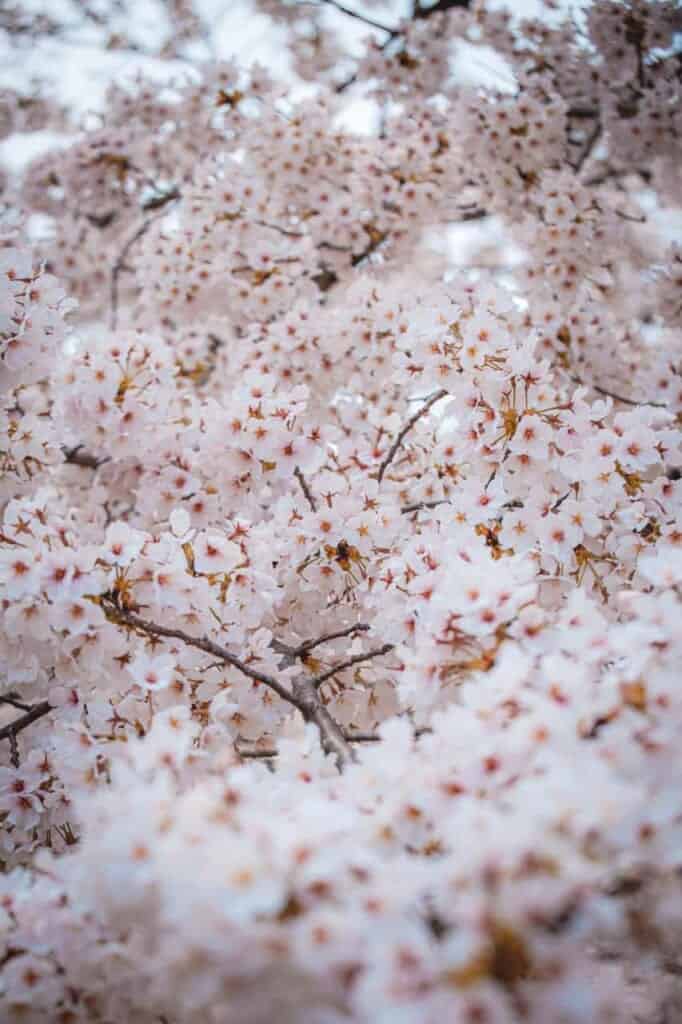
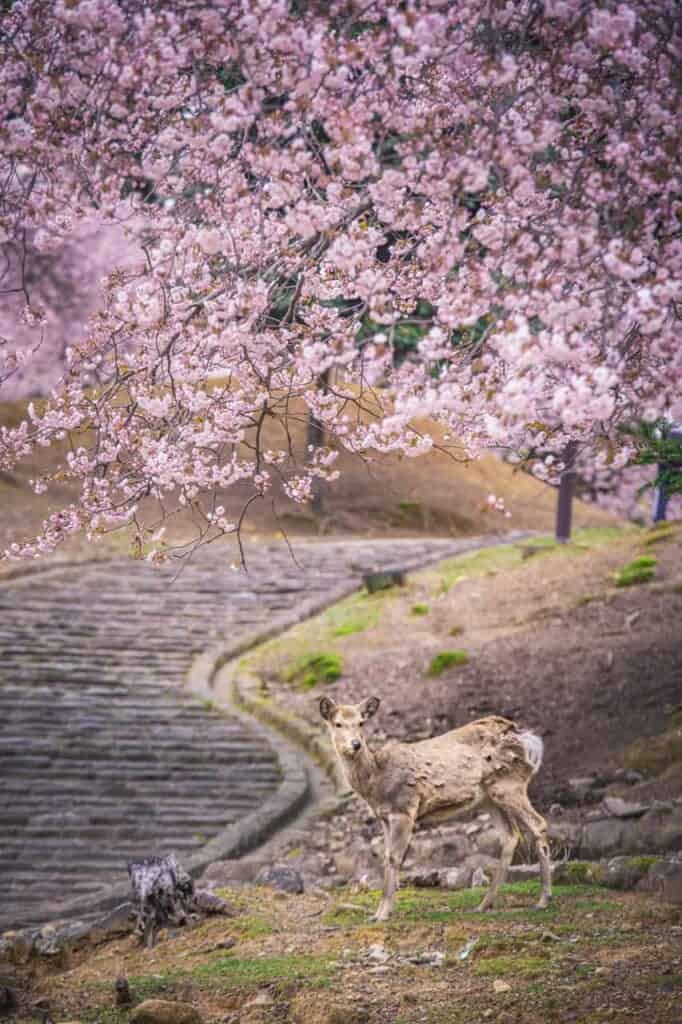
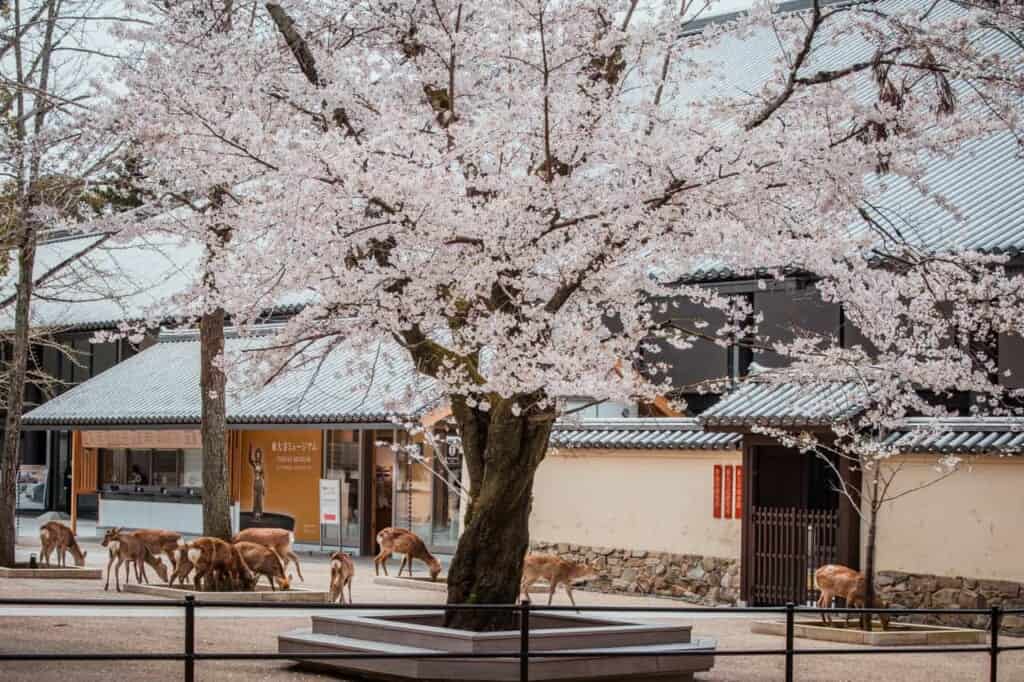
As Japan’s first permanent capital (710–784), Nara preserves its timeless charm, blending centuries-old traditions with natural beauty. Explore its serene temples or stroll through sakura-lined paths: spring in Nara is a truly unforgettable experience for nature lovers and history enthusiasts.
Nara Park: A Walk Amongst Deer and Power Spots
The 600 hectares Nara Park 奈良公園 is one of the main attractions of the city. It is located at the foot of Mount Wakakusa 若草山 and is home to some historical monuments that were declared a World Heritage Site by UNESCO in 1998. Also, it is the habitat of more than 1200 domesticated sika deer 鹿 that have even learned to bow to visitors for food.
See the Historic Monuments of Ancient Nara
The Historic Monuments of Ancient Nara were declared a World Heritage Site by UNESCO as a representation of the Japanese political structure, tradition, and culture during the 8th century.
The Historic Monuments of Ancient Nara comprise five Buddhist temples, one Shinto shrine, one palace, and a primeval forest.
- Todai-ji 東大寺 – Buddhist Temple
- Kofuku-ji 興福寺 – Buddhist Temple
- Kasuga Taisha 春日大社 – Shinto Shrine
- Kasugayama Forest 春日山 – Primitive forest
- Gango-ji 元興寺 – Buddhist Temple
- Yakushi-ji 薬師寺 – Buddhist Temple
- Toshodai-ji 唐招提寺 – Buddhist Temple
- Heijo Palace 平城宮 – Imperial Palace during the Nara period (710-784 A.D.)
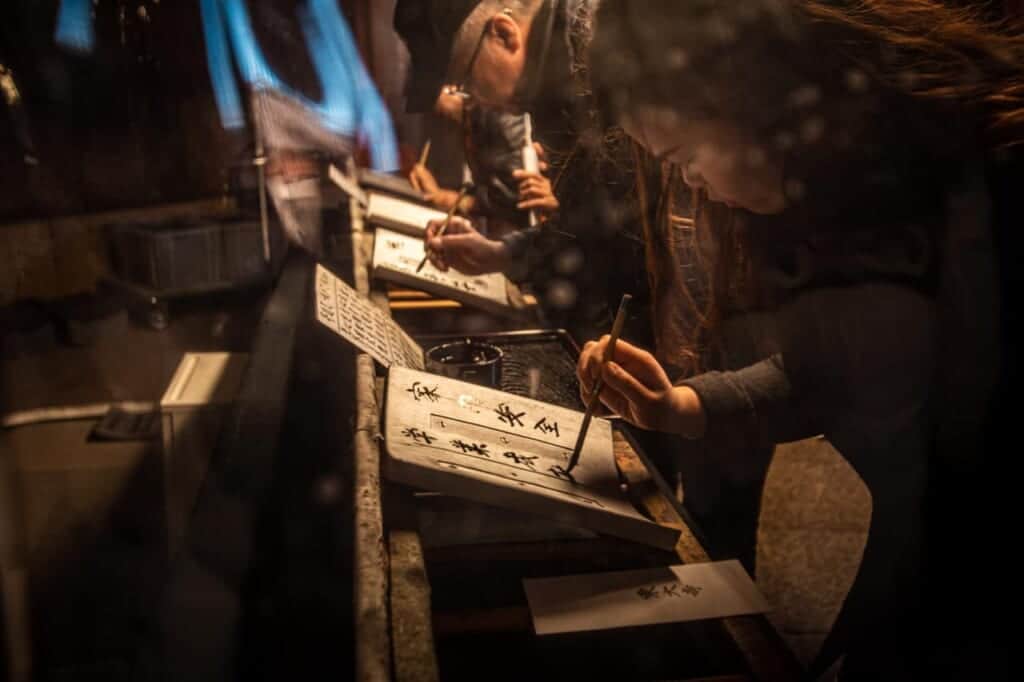
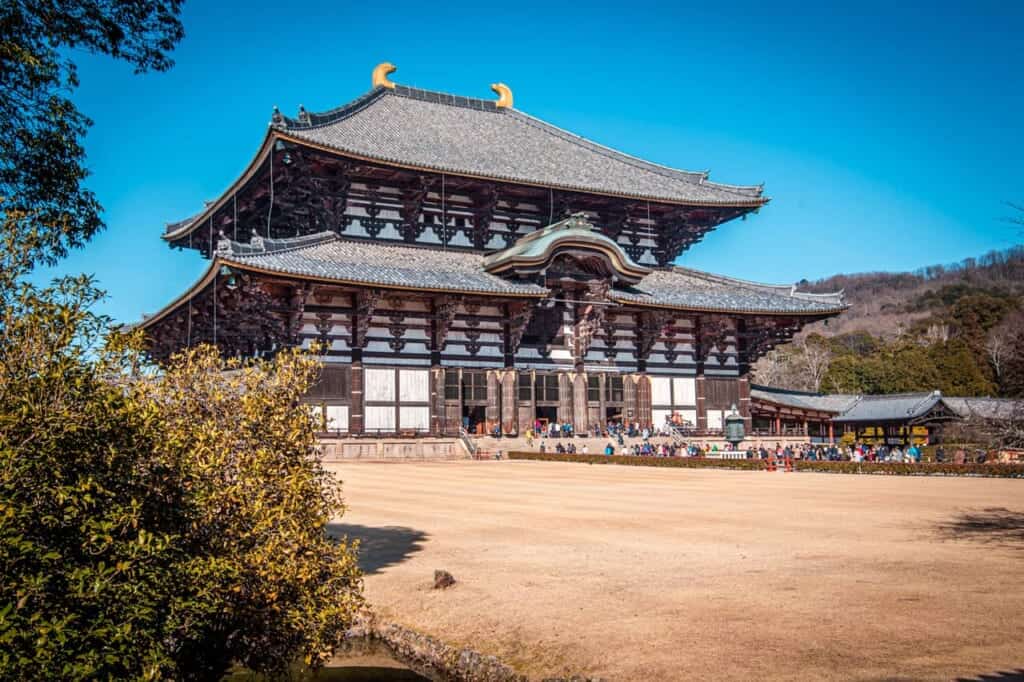
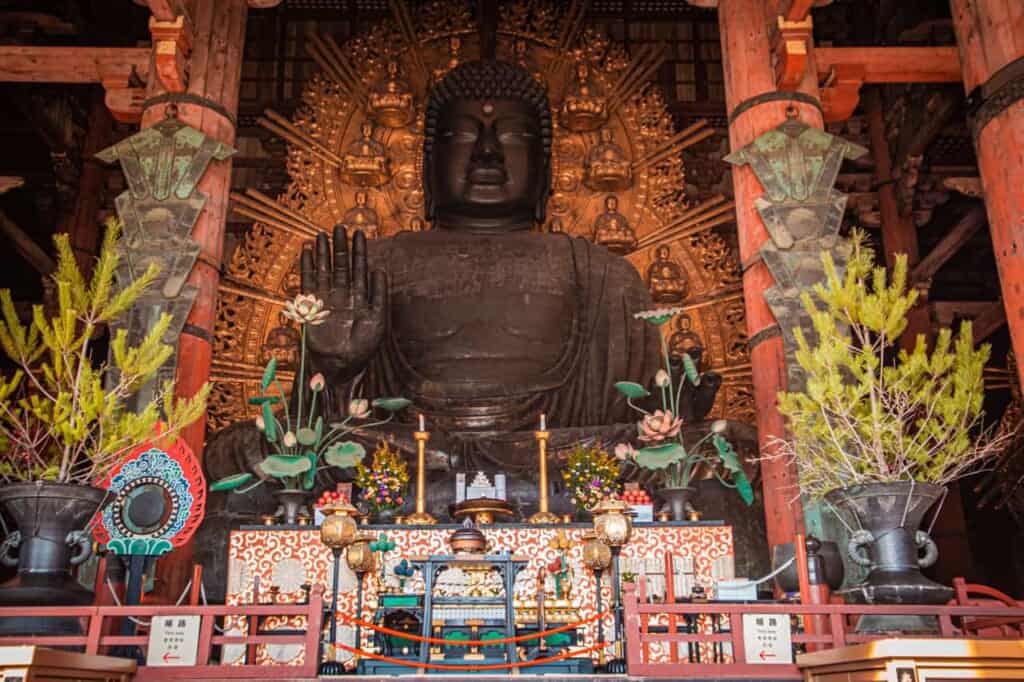
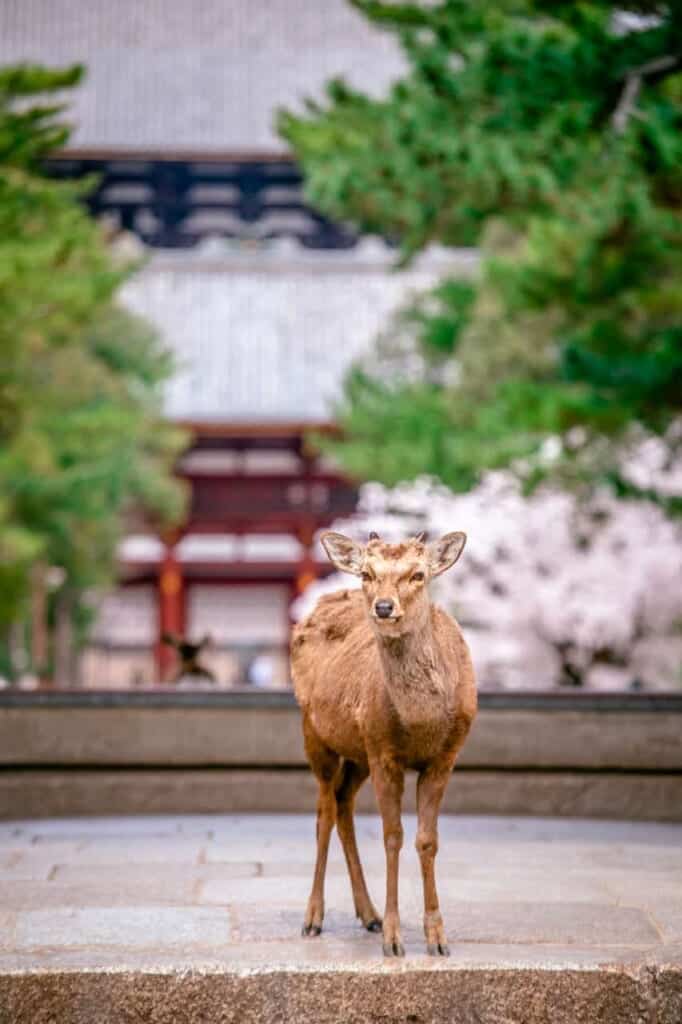
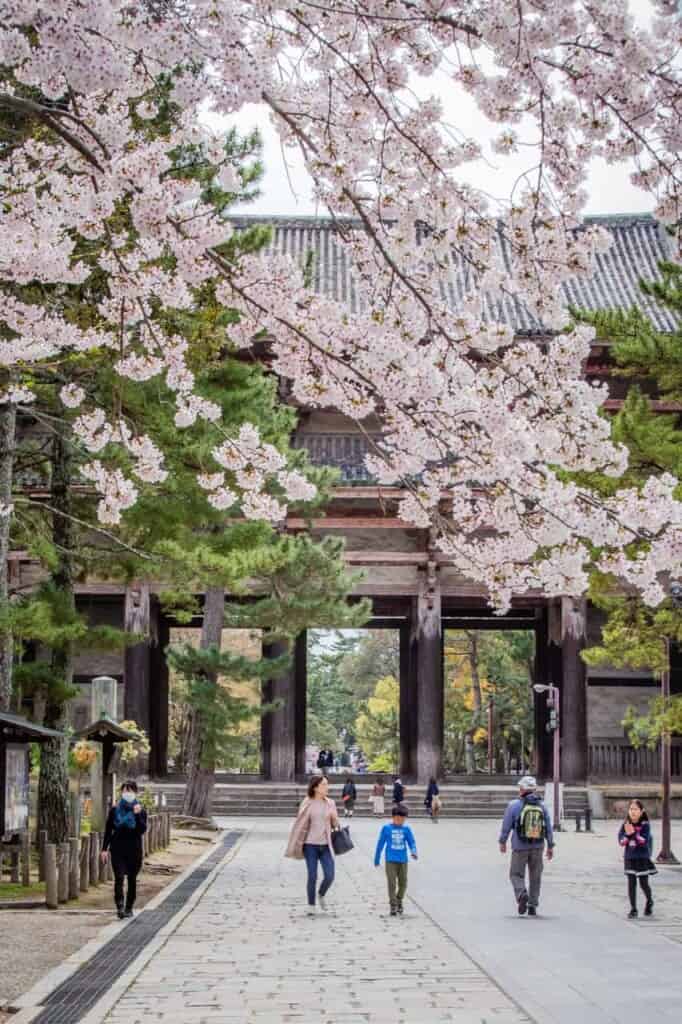
One of the most significant temples among the Historic Monuments of Ancient Nara is Todai-ji, in the heart of Nara Park. This temple is the largest wooden building in the world and the Daibutsuen hall houses the big Buddha 15 meters high.
 Tōdai-ji
Tōdai-ji
TOURIST ATTRACTION- 406-1 Zoshicho, Nara, 630-8587, Japan
- ★★★★☆
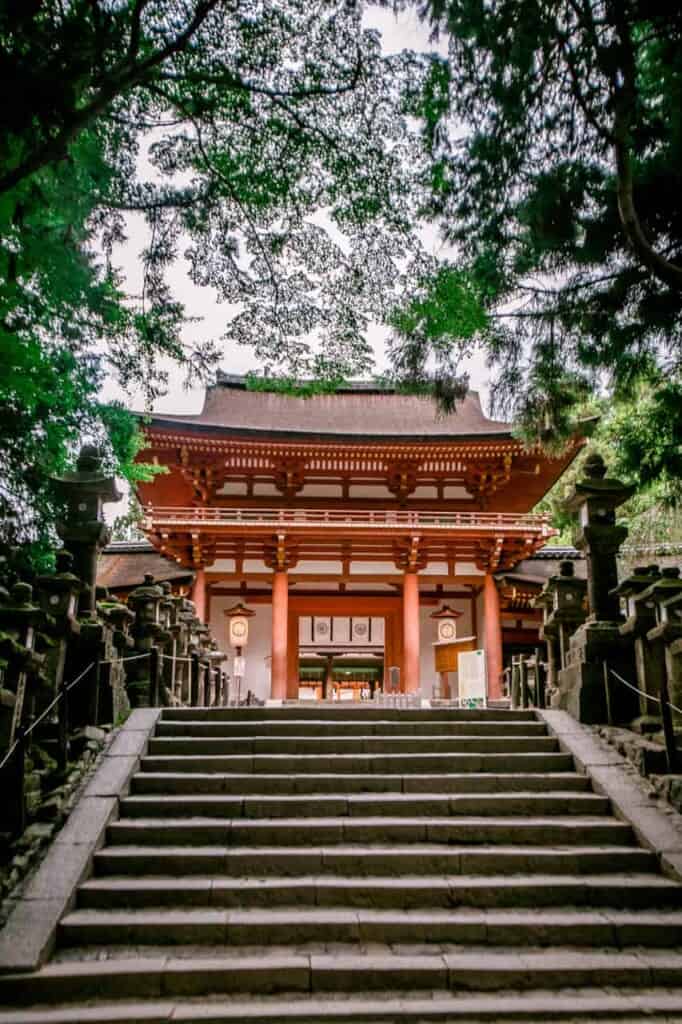
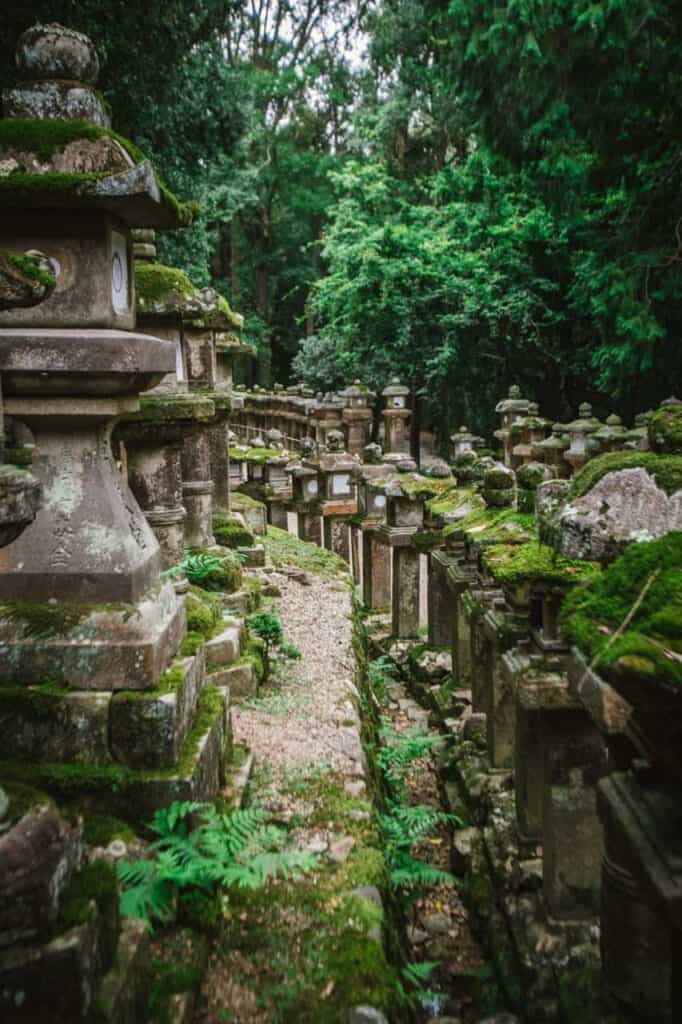
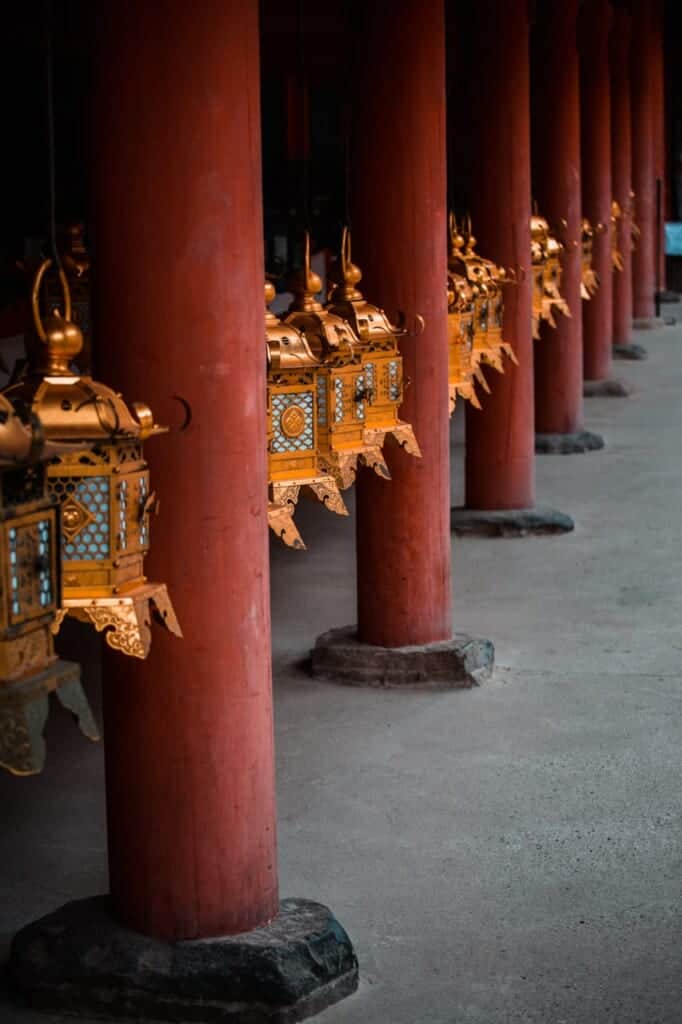
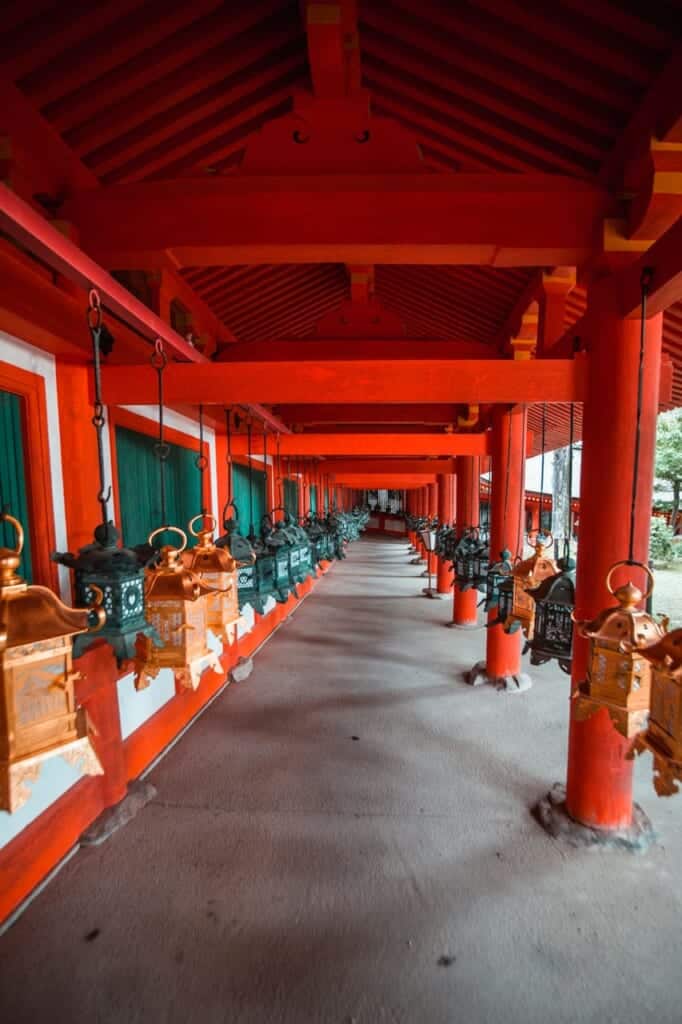
Kasuga Taisha is the only shrine on the UNESCO list and is famous for its bronze lanterns that hang around the shrine and are lit only twice a year.
 Kasugataisha Shrine
Kasugataisha Shrine
ESTABLISHMENT PLACE_OF_WORSHIP POINT_OF_INTEREST- 160 Kasuganochō, Nara, 630-8212, Japan
- ★★★★☆
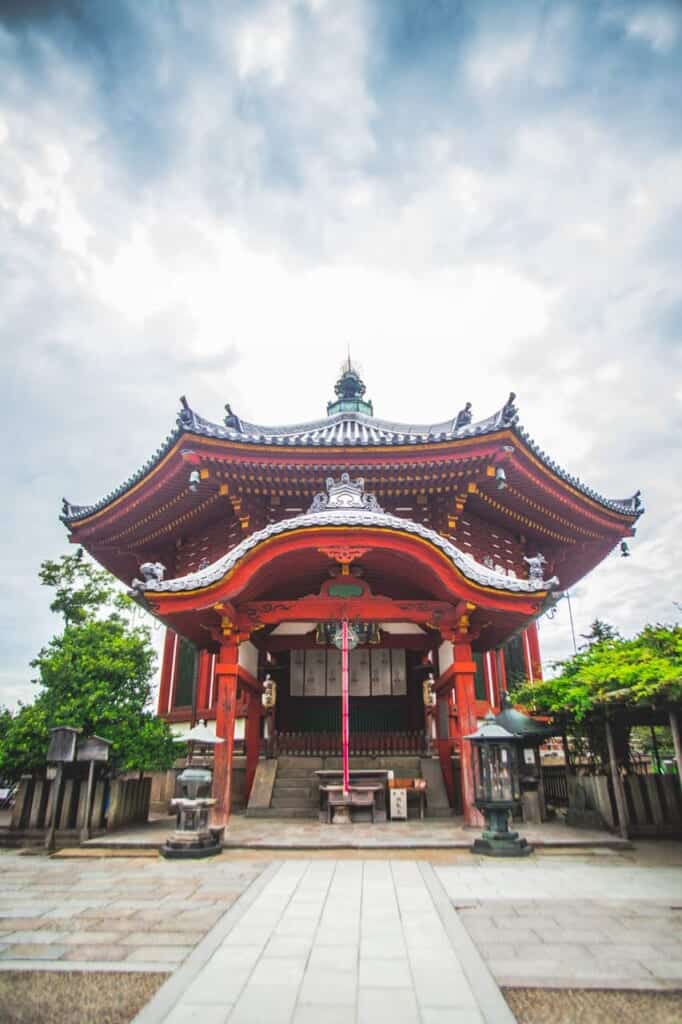
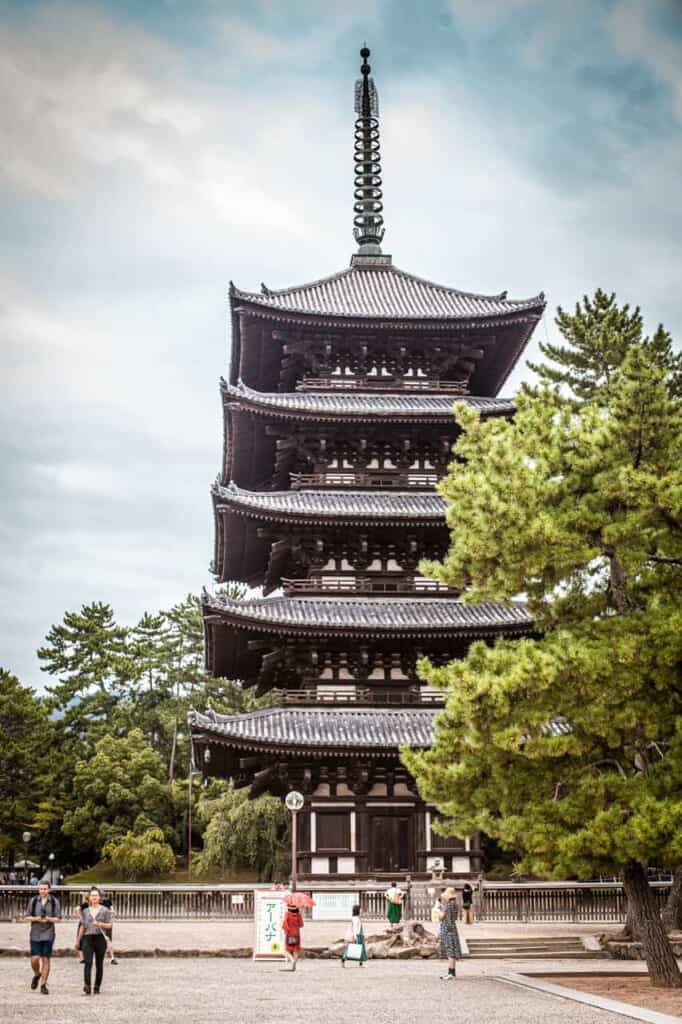
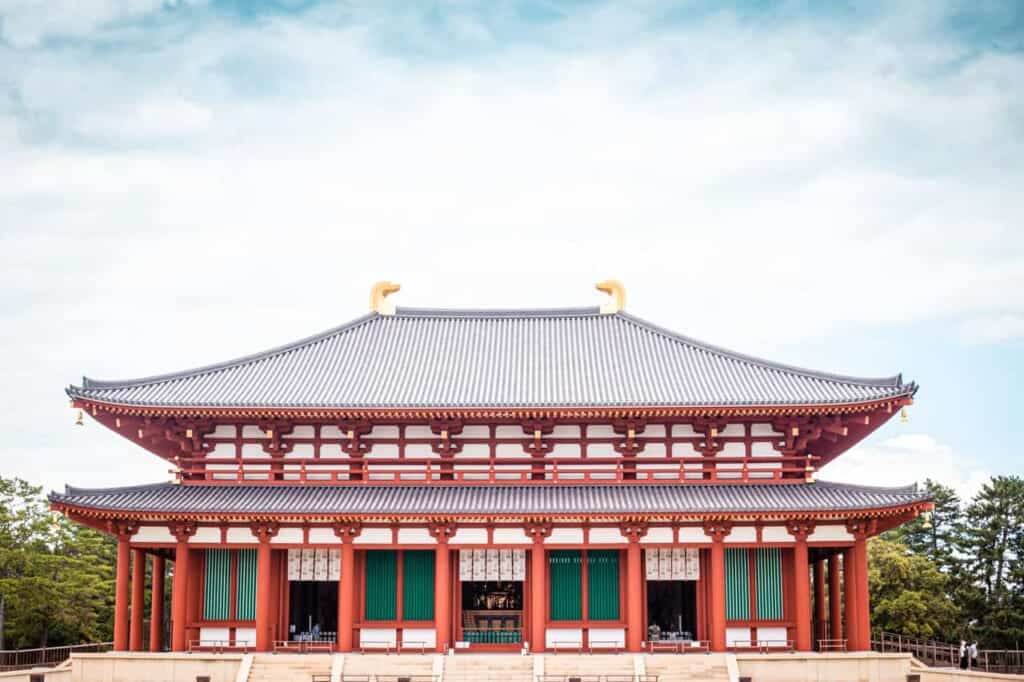
Kofuku-ji Temple includes the second-tallest wooden pagoda in Japan and is one of the symbols of Nara.
 Kōfuku-ji
Kōfuku-ji
ESTABLISHMENT PLACE_OF_WORSHIP POINT_OF_INTEREST- 48 Noboriōjichō, Nara, 630-8213, Japan
- ★★★★☆
Meet Nara’s Sacred Deer
Nara Park’s deer are protected by law and have been designated as National Treasure. In the Shinto religion, deer are considered messengers of gods. According to local folklore, Takemikazuchi, the god of thunder, rode into Nara city on the back of a white deer.
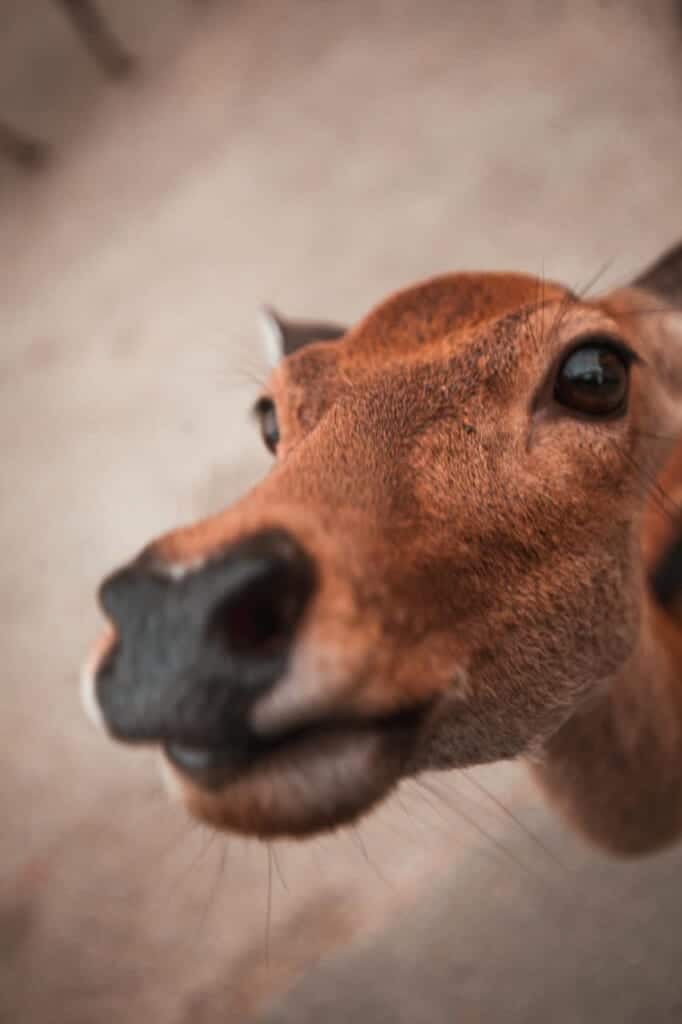
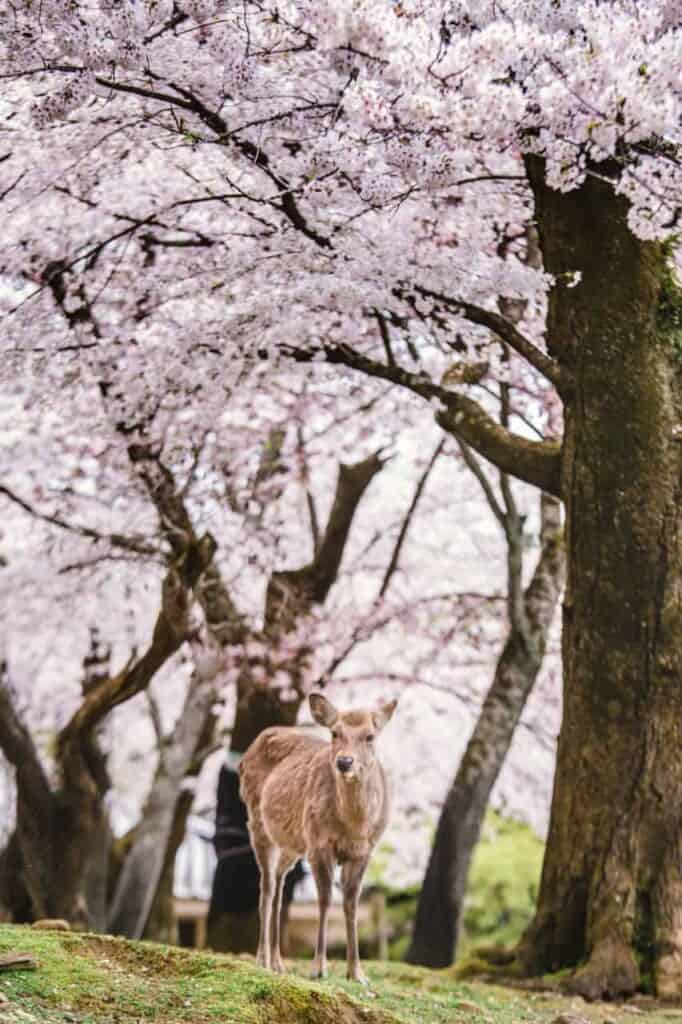
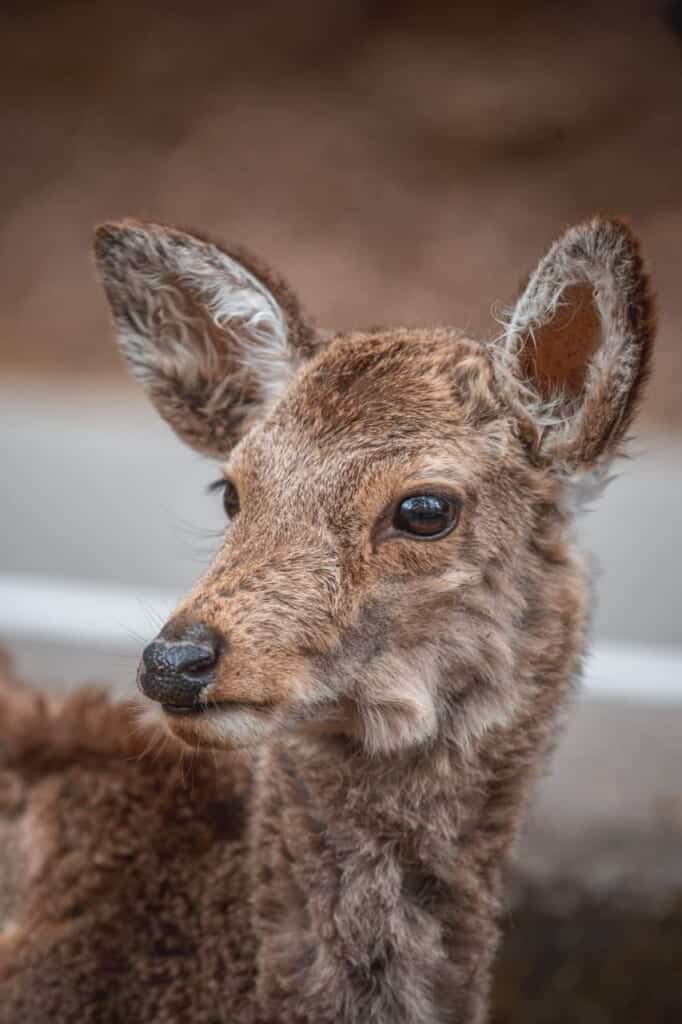
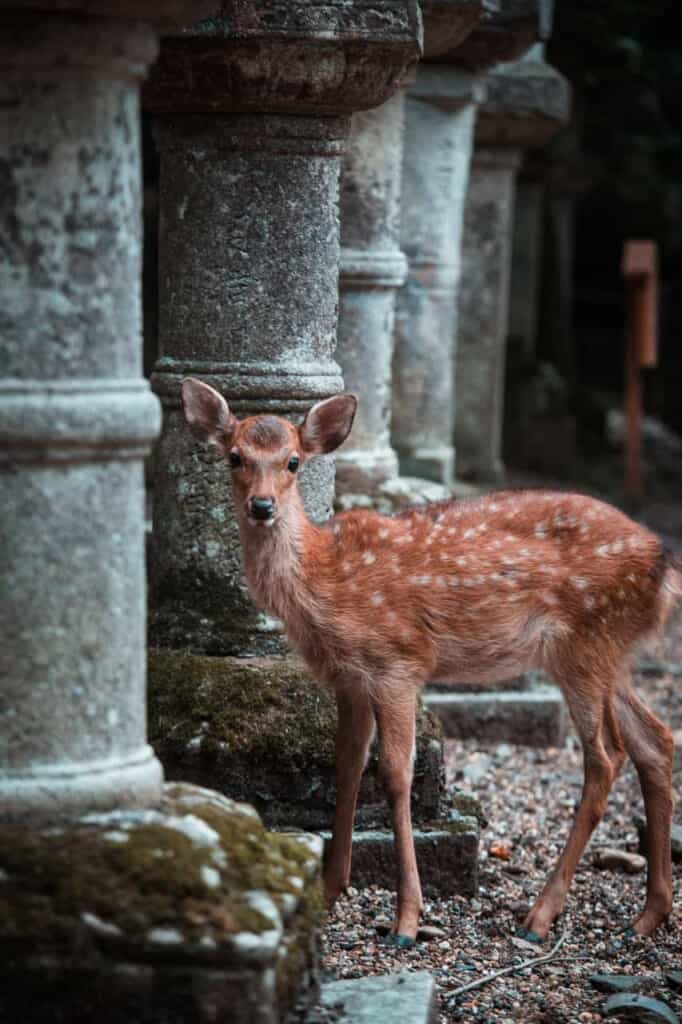
Today, the 1,200 sika deer that inhabit Nara Park are friendly and accustomed to visitors, who often feed them with shika senbei, rice crackers that can be purchased in the area. If you hold one of these crackers over their head, they will make a graceful bow.
When is Cherry Blossom Season in Nara?
Nara is not only home to temples and deer. In spring, more than 1,700 cherry trees burst into bloom turning the park into a living fairy tale. Cherry blossoms usually begin to bloom during the last week of March and their flowers can be enjoyed until mid-April, with their peak in early April.
But cherry blossoms are not an exact science and there are years in which they bloom earlier or later. Therefore, I recommend consulting the official forecast made by the Japan Meteorological Agency with the updated information and possible changes or detailed information for every region.
Where to Enjoy Sakura Cherry Blossoms in Nara Park
Visiting Nara Park at any time of the year is an unforgettable experience. But it is especially beautiful during the sakura season. Watching the deer resting peacefully on a bed of fallen petals, or strolling and even picnicking under a sky of flowers. Sounds good, doesn’t it?
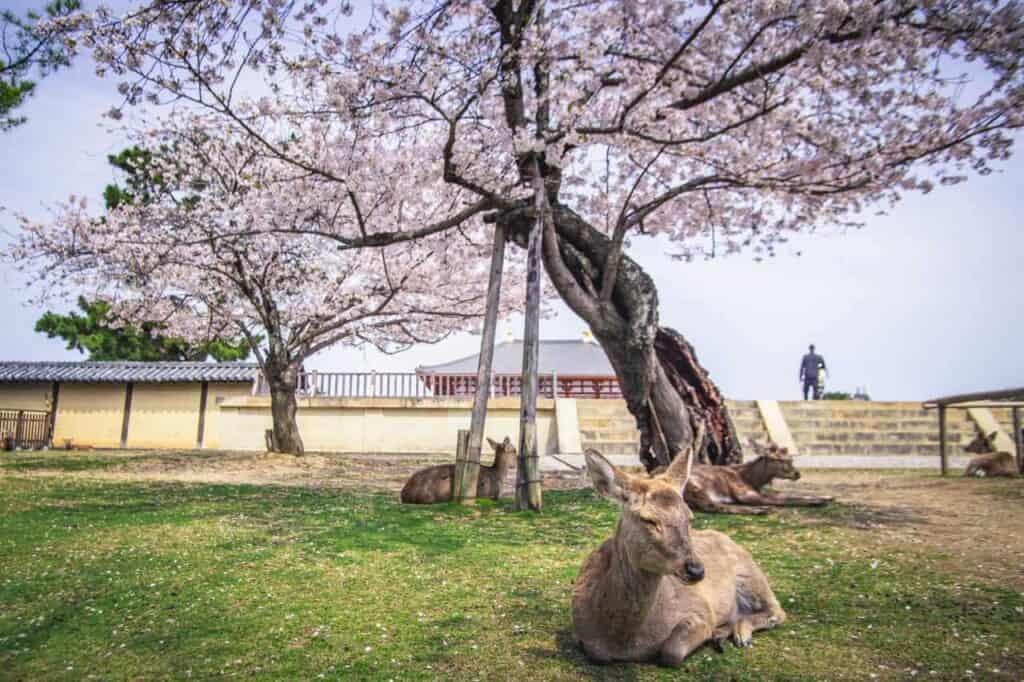
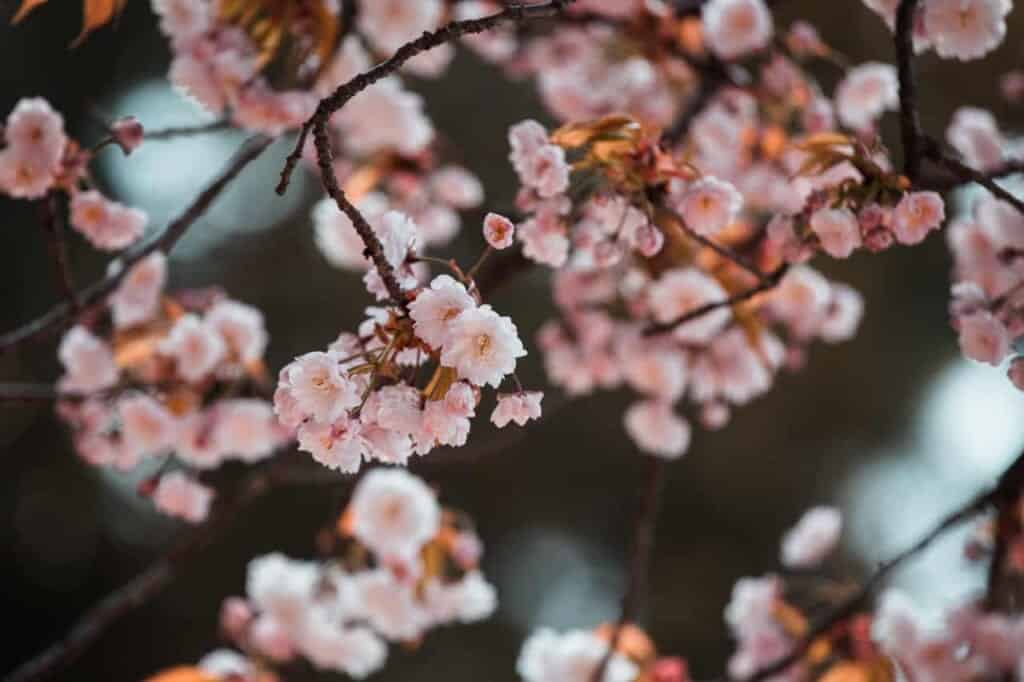
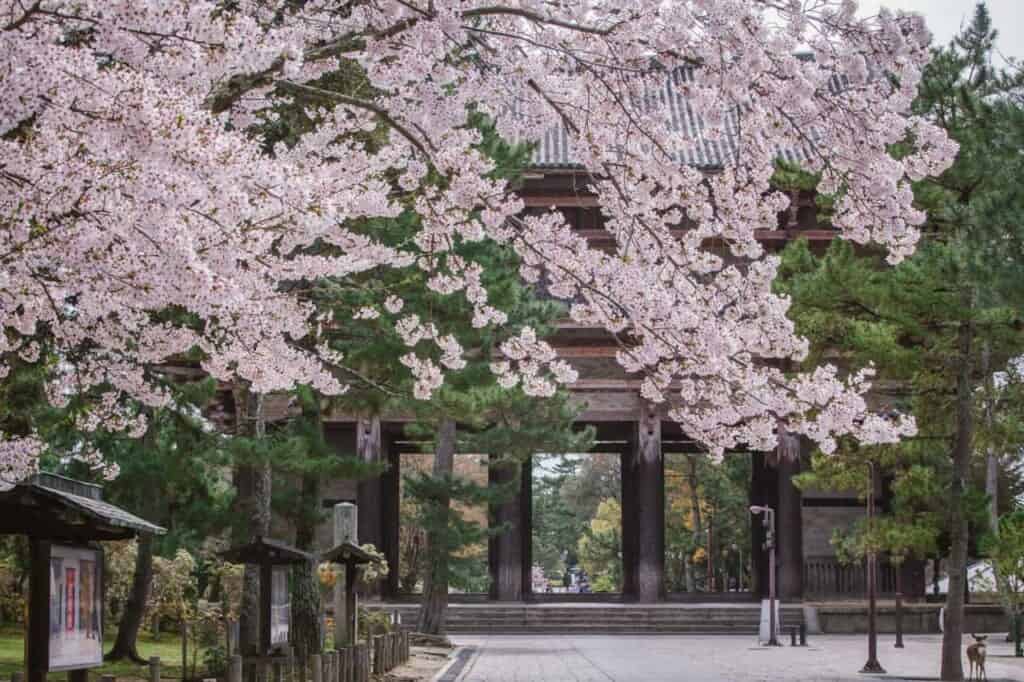
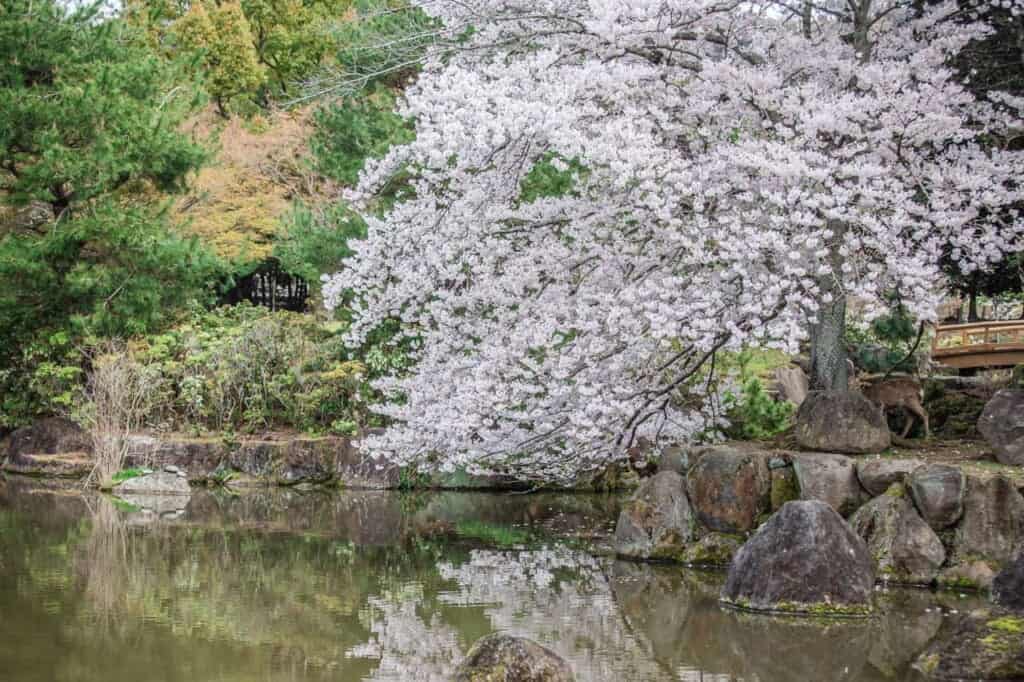
I arrived at Nara Park on April 3, at the peak of the blooming season. It was a rainy and gray day, but that didn’t stop me from enjoying the beauty of the sakura trees. When I immersed myself in the park’s nature, I discovered that there were cherry blossoms practically all over the place. My recommendation is to spend a full day in Nara so you can stroll around the park and visit the many temples and shrines that are scattered throughout the area.
Himuro Shrine
Himuro 氷室神社 is a Shinto shrine that houses an impressive shidare-zakura 枝垂桒桜. This cherry tree is the one that heralds the arrival of spring in Nara City, as it is one of the earliest species to bloom. In addition to the shidare-zakura, there are also other species of sakura whose white flowers contrast with the crimson red of the torii gate at the shrine’s entrance.
Himuro Shrine is located very close to the Nara National Museum, one of the main museums in the country where you can enjoy Japanese Buddhist art.
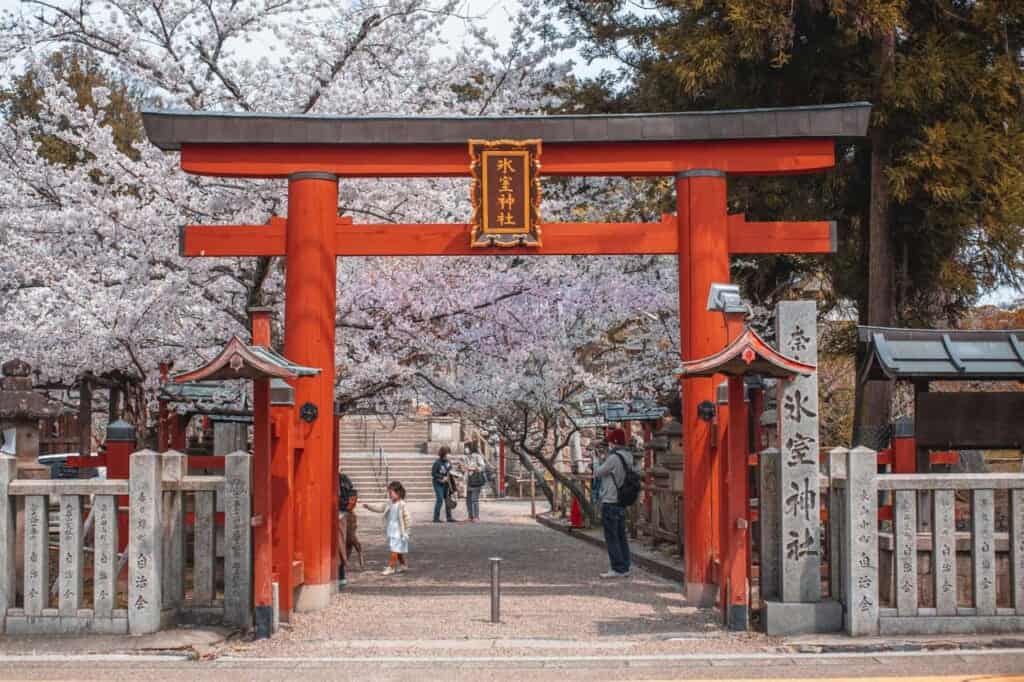
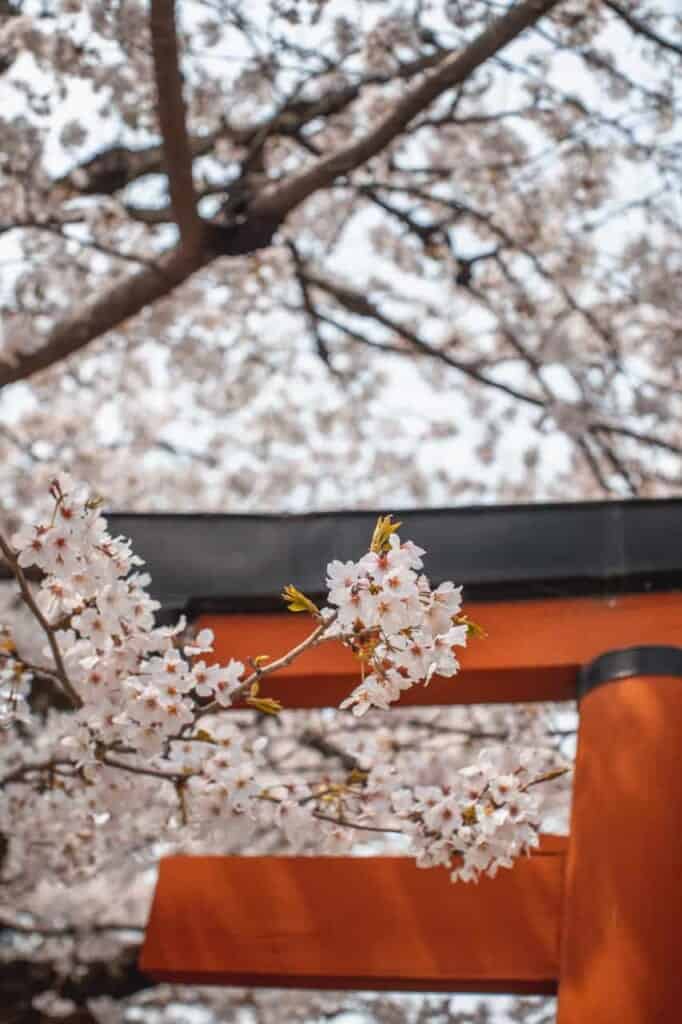
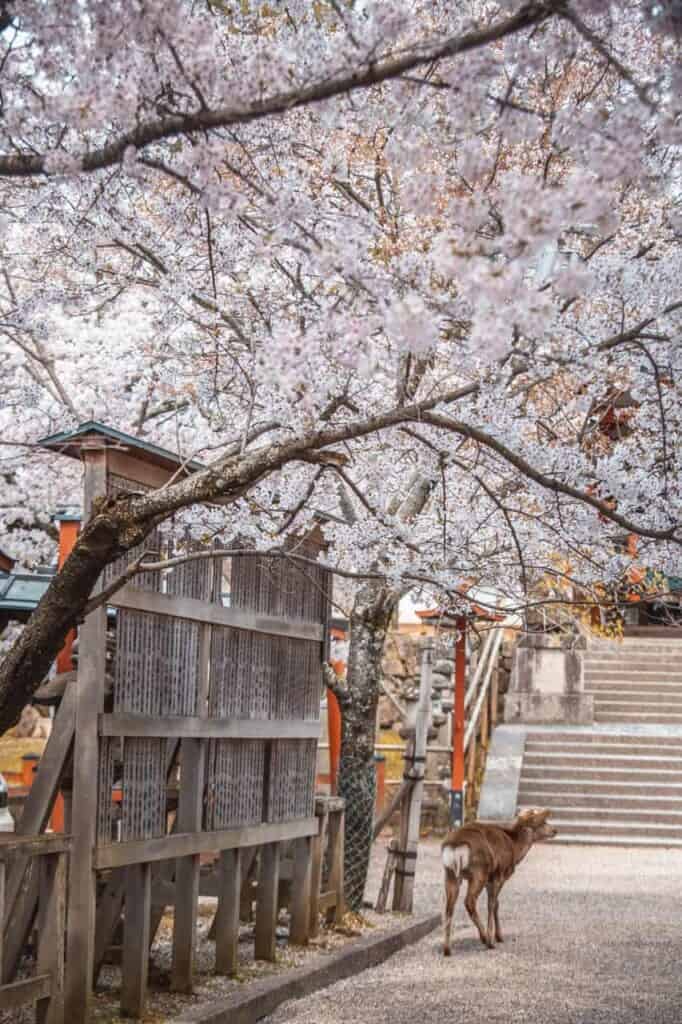
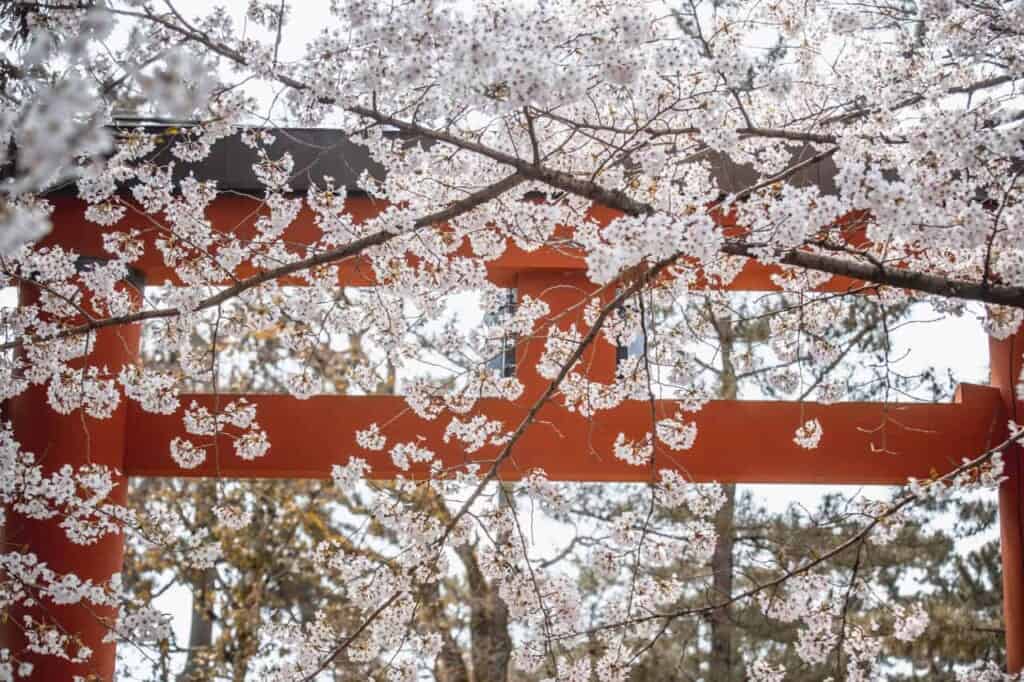
 Himuro Shrine
Himuro Shrine
ESTABLISHMENT PLACE_OF_WORSHIP POINT_OF_INTEREST- 1-4 Kasuganochō, Nara, 630-8212, Japan
- ★★★★☆
Kasugano-enchi
Kasugano-enchi 春日野園地 is located southeast of Todaiji Temple and is a large grassy esplanade surrounded by cherry blossom trees. It is the perfect place to enjoy a picnic or to relax on one of the benches scattered around the site.
Here, as in most areas of the park, there is a multitude of deer that often approach visitors in search of food and attention.
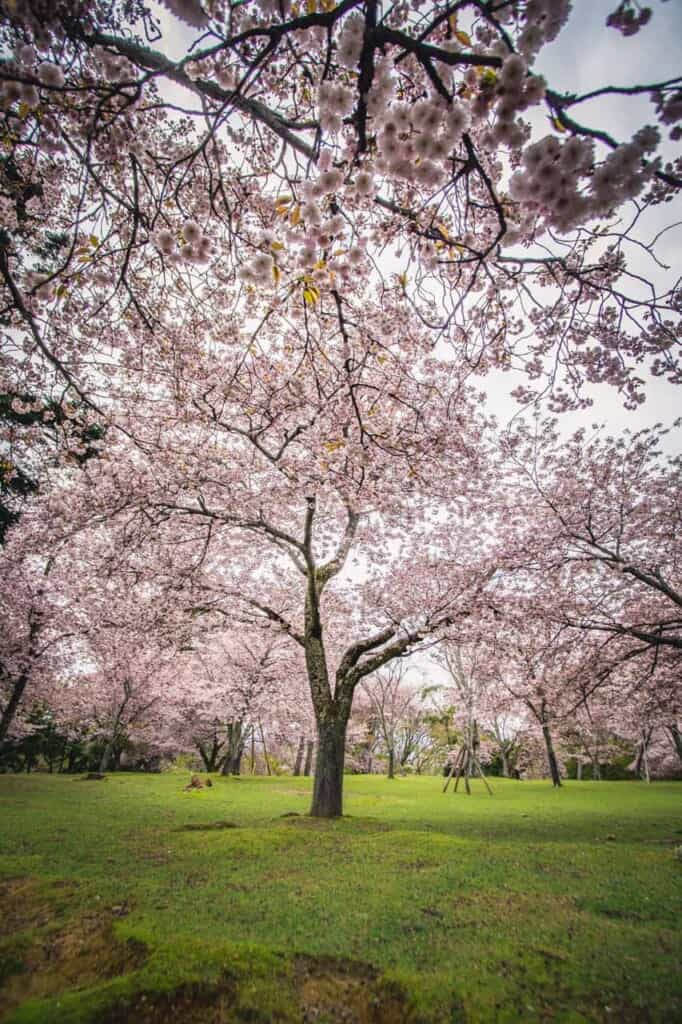
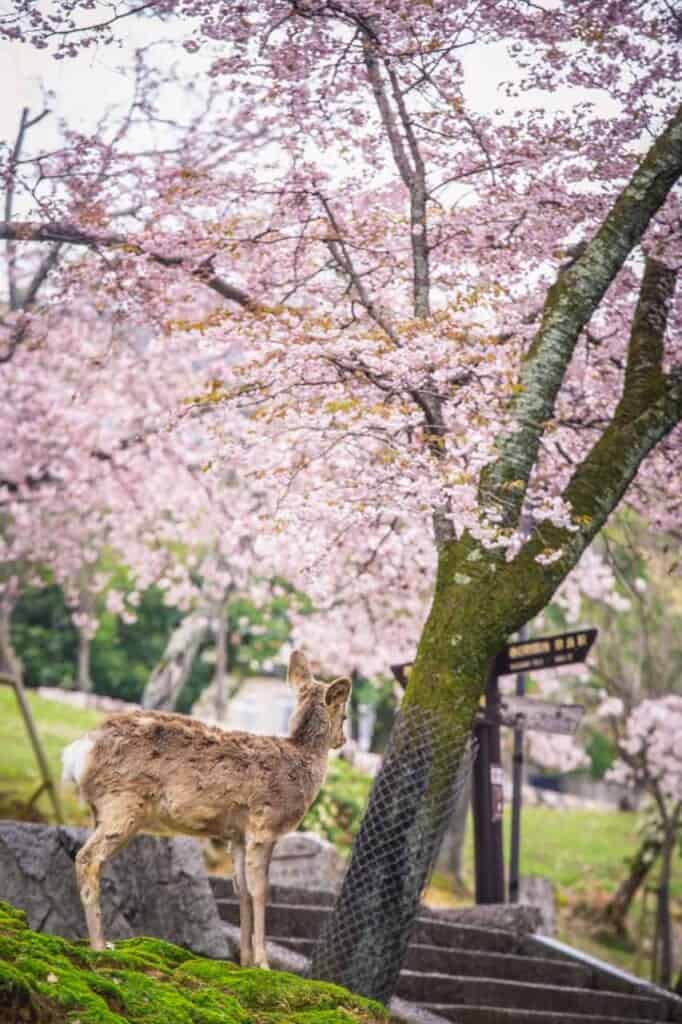
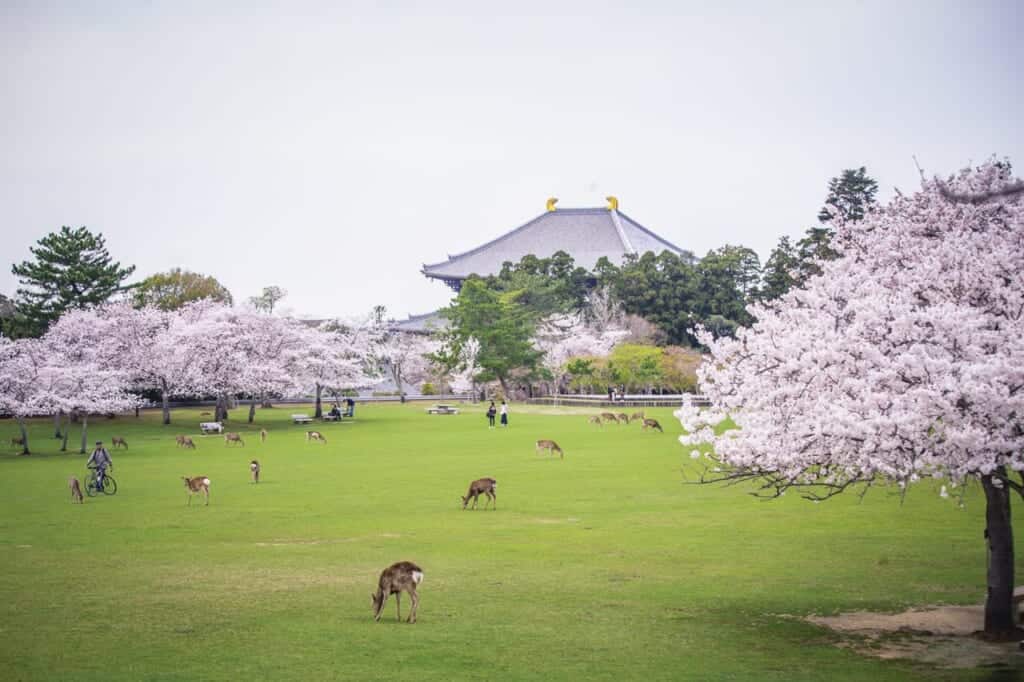
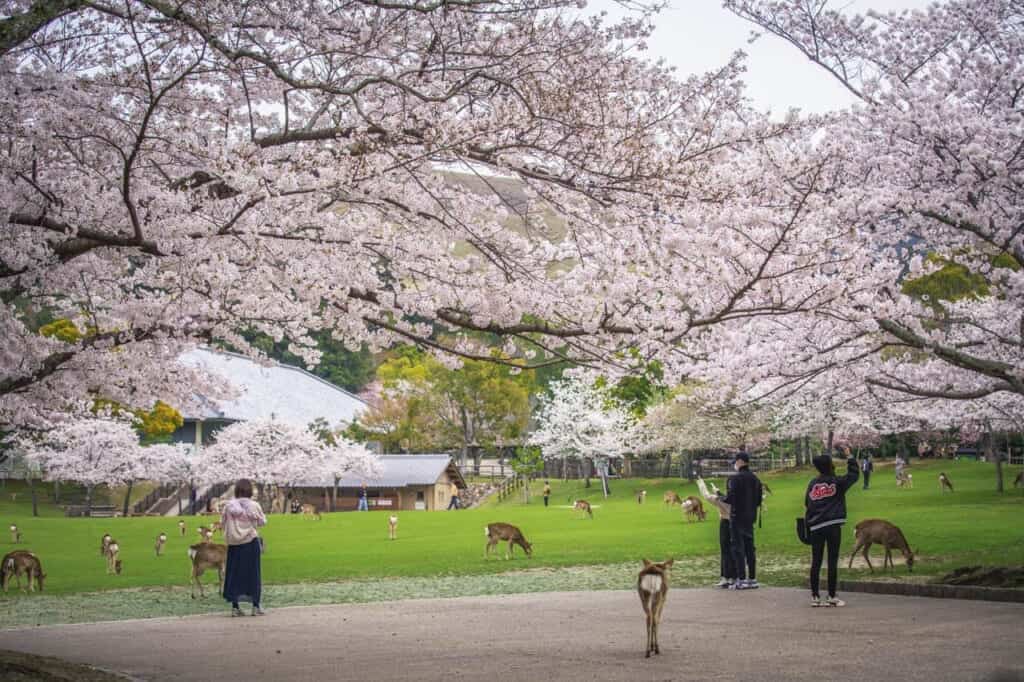
 Kasuganoenchi
Kasuganoenchi
ESTABLISHMENT PARK POINT_OF_INTEREST- Zoshicho, Nara, 630-8211, Japan
- ★★★★☆
Chayama-enchi
Chayama-enchi 茶山園地 is a small forest hidden at the foot of Mount Wakakusa. When the cherry blossoms begin to fall, they cover the ground forming a carpet of petals where deer rest peacefully. Although it is a quiet place, during the sakura blossom season visitors come to admire the flowers of Nara no Yaezakura 奈良の八重桜 and Nara no Kokonoezakura 奈良の九重桜, two famous cherry tree species in the area.
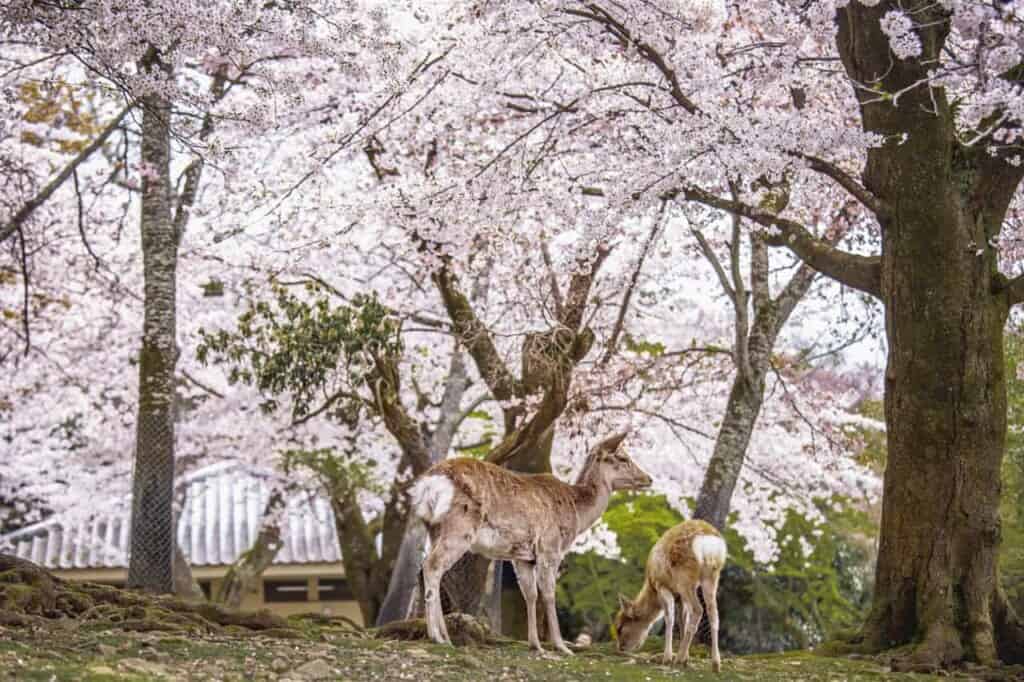
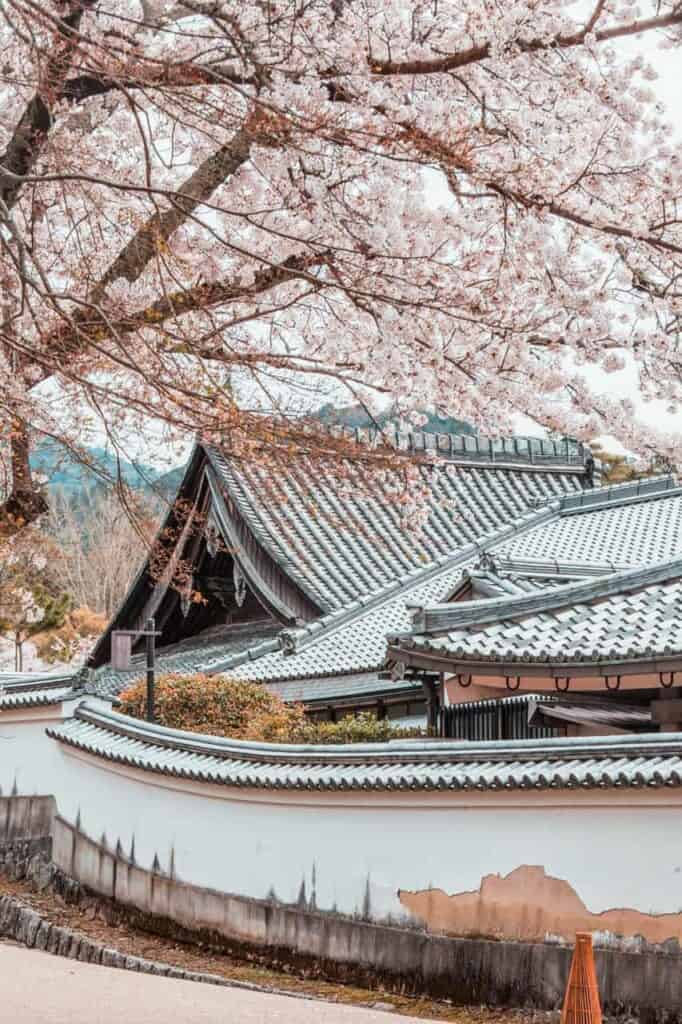
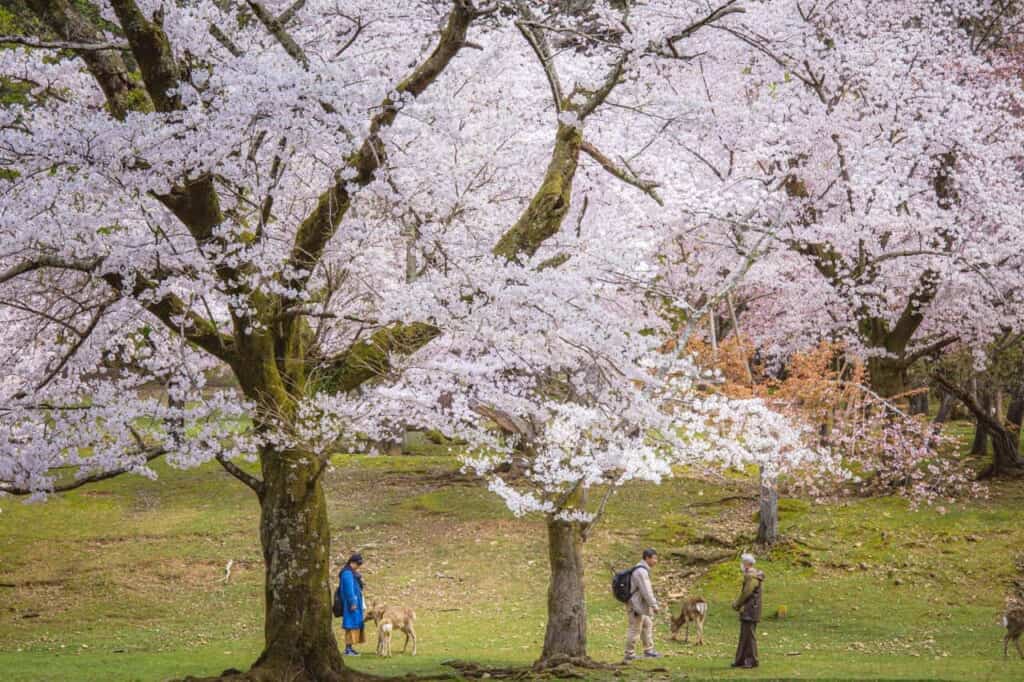
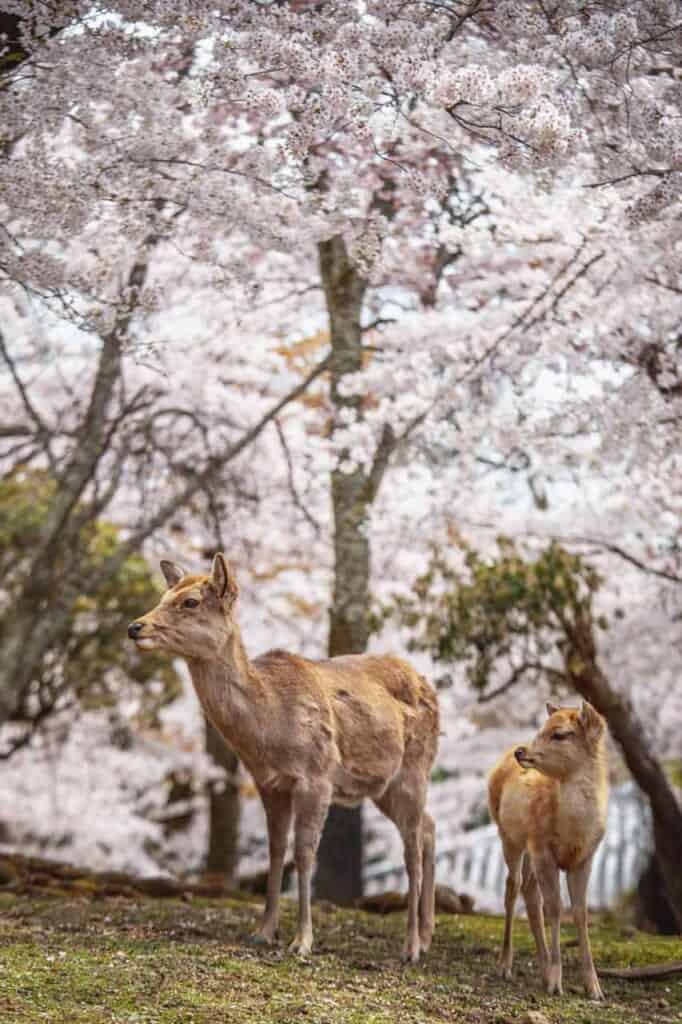
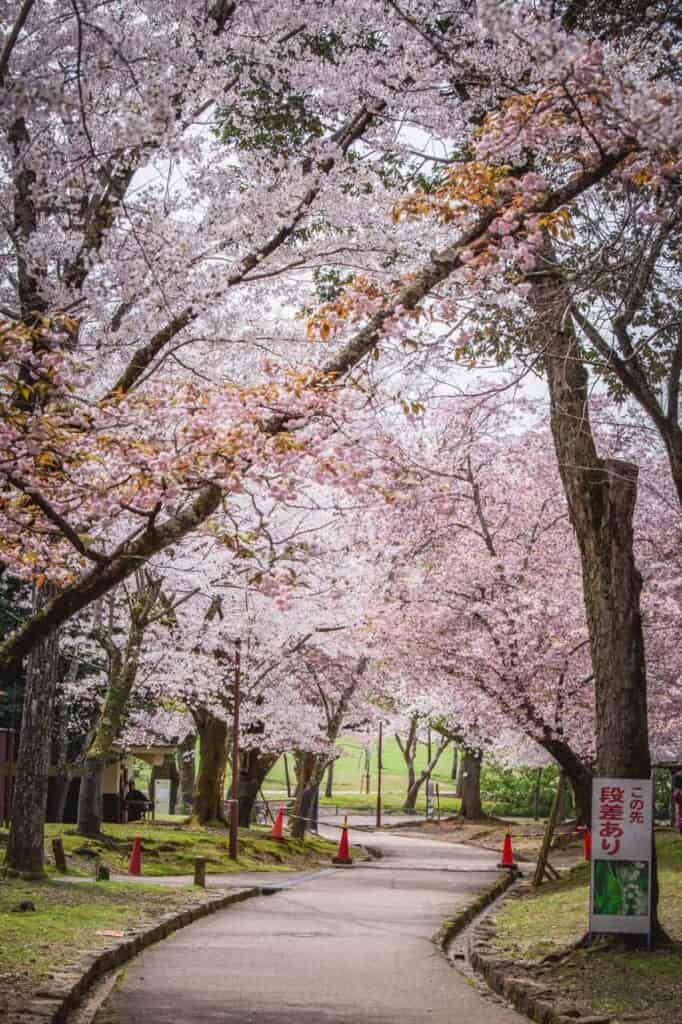
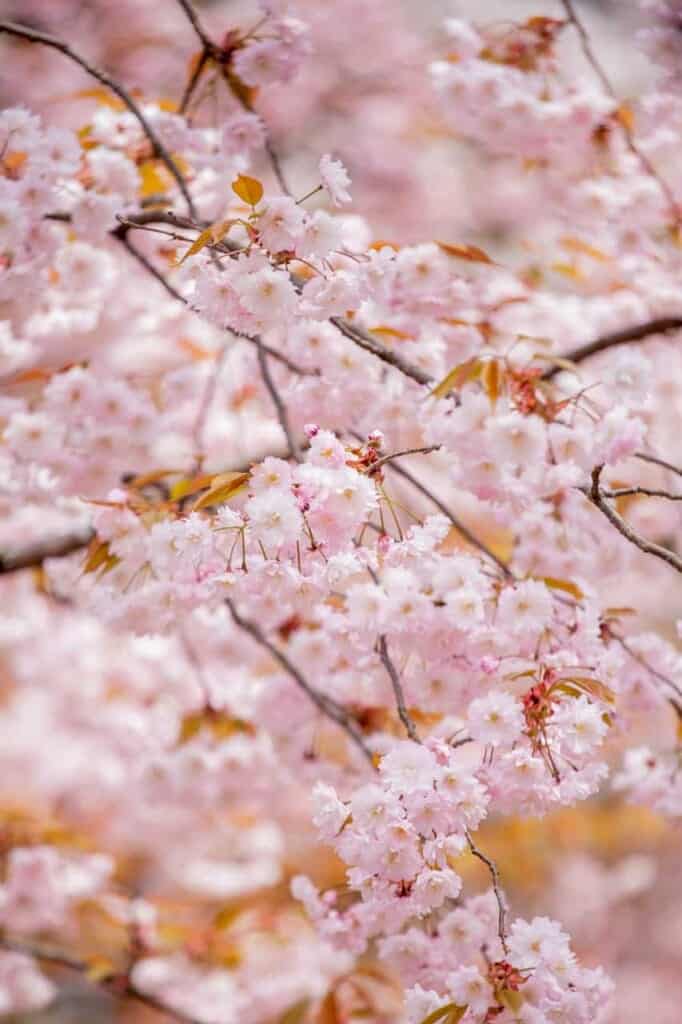
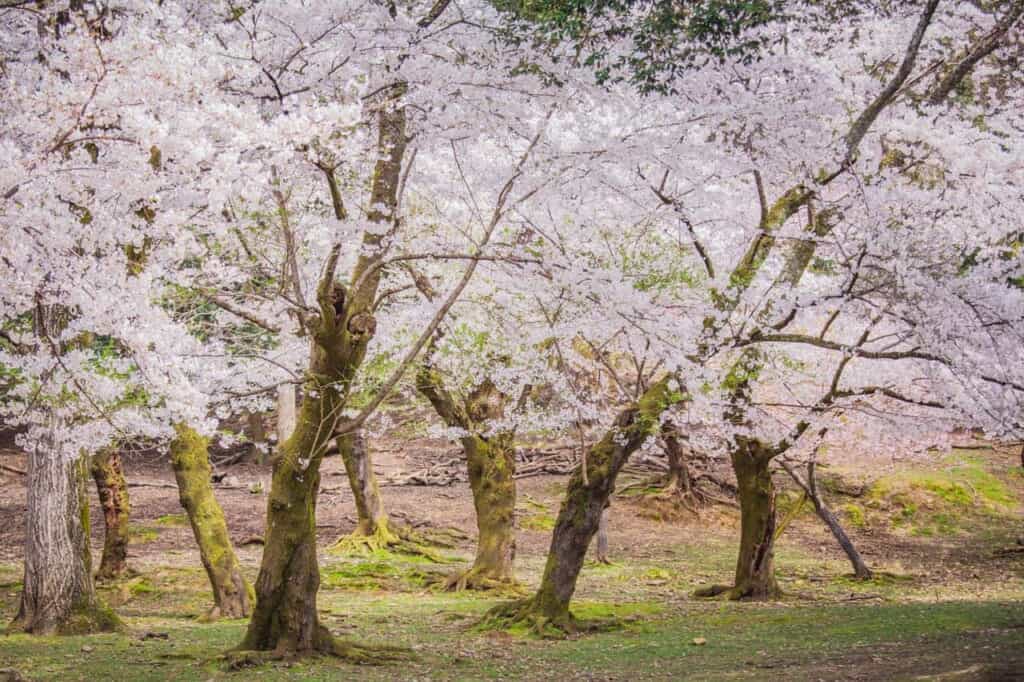
 Chayama-enchi
Chayama-enchi
ESTABLISHMENT PARK POINT_OF_INTEREST- Zoshicho, Nara, 630-8211, Japan
- ★★★★☆
Ukimido Pavilion
The Ukimido Pavilion 浮見堂 seems to float on the waters of Sagiike Lake 鷺池. It is a hexagonal wooden construction accessed by a bridge built of the same material. It is a recurring scene for Japanese couples who come to the place for their wedding photoshoots.
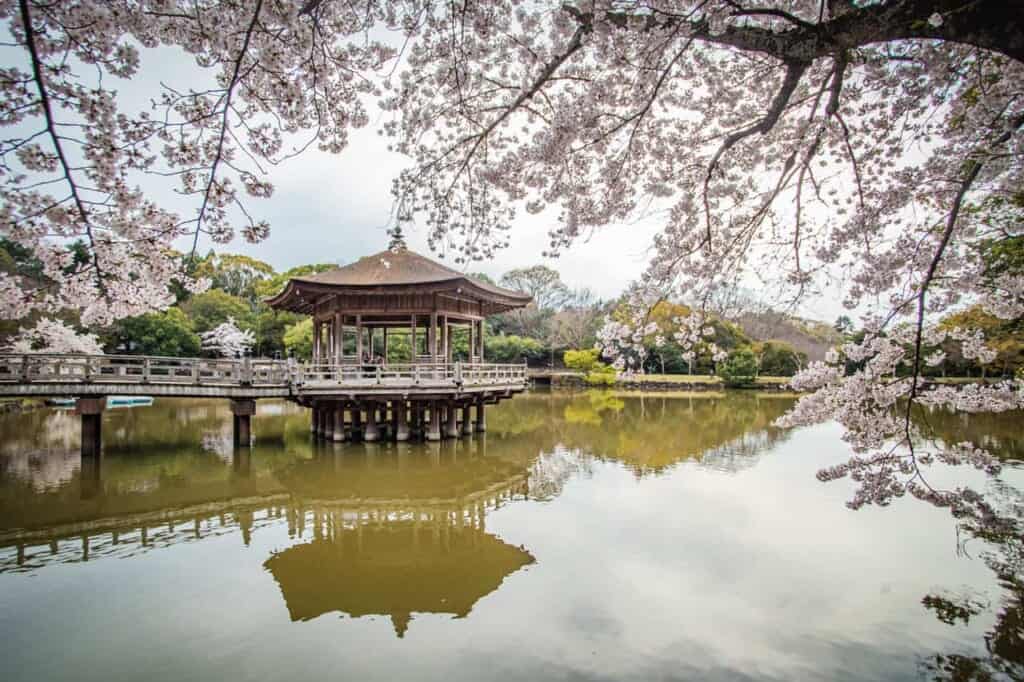
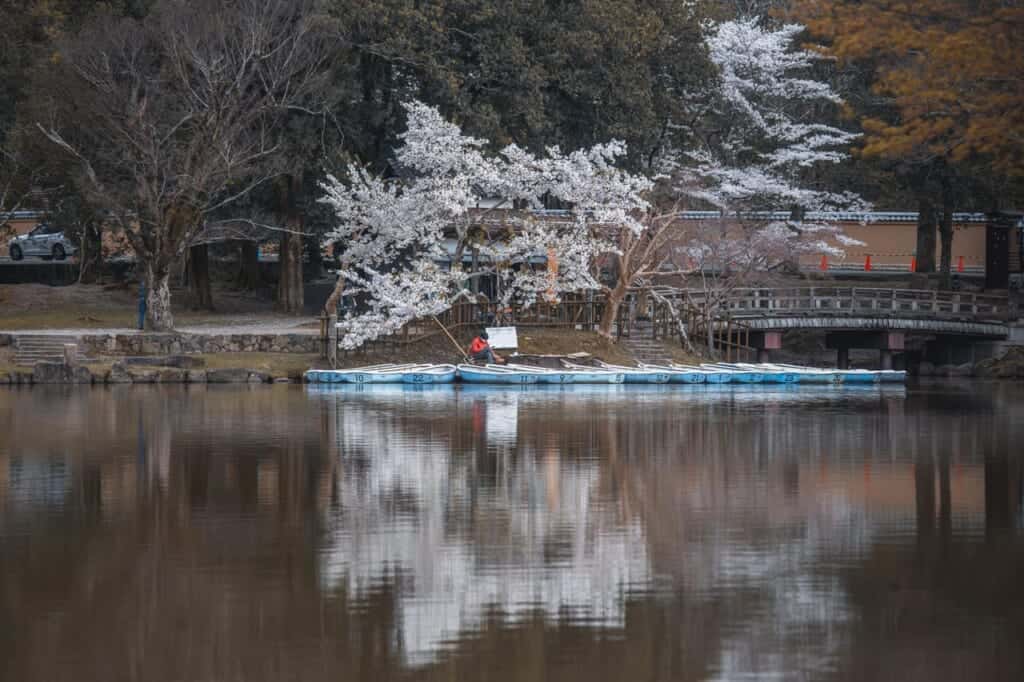
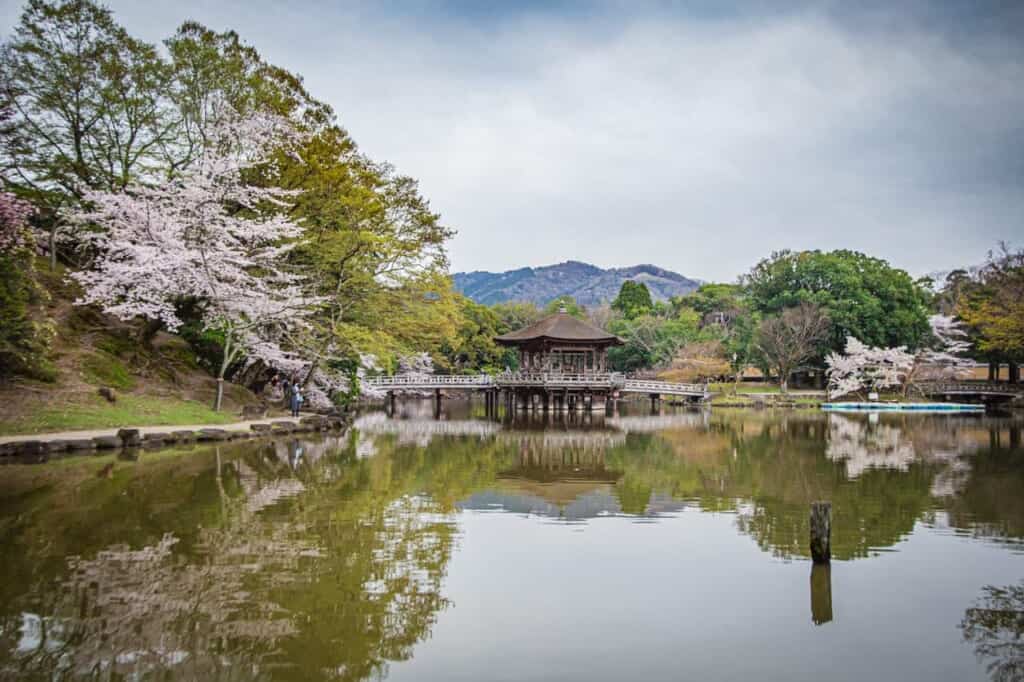
In spring, the cherry trees that surround the lake form a floral frame of the pavilion and its impressive reflection in the water.
 Ukimido Pavilion
Ukimido Pavilion
ESTABLISHMENT PARK POINT_OF_INTEREST- Takabatakecho, Nara, 630-8301, Japan
- ★★★★☆
Sanjo-dori Street
Sanjo-dori 三条通り is the main street of the city and runs from Nara Park to JR Nara Station. It is lined with stores, hotels, and restaurants. Just in the area closest to one of the entrances to the park, you can enjoy the cherry blossoms and their white and ethereal petals on the roofs of the traditional souvenir stalls.
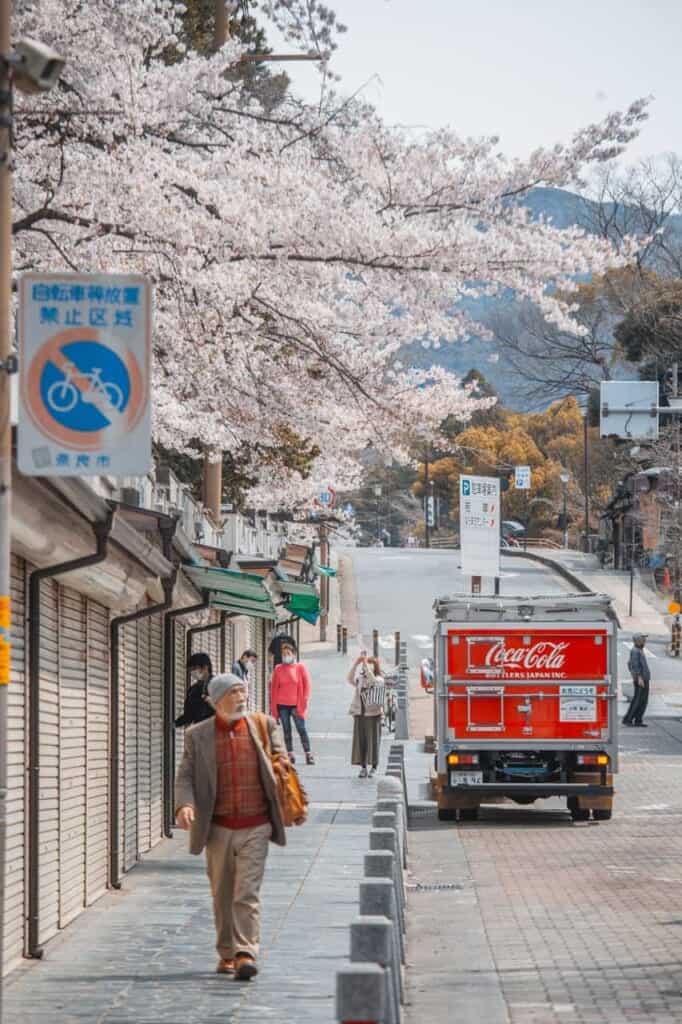
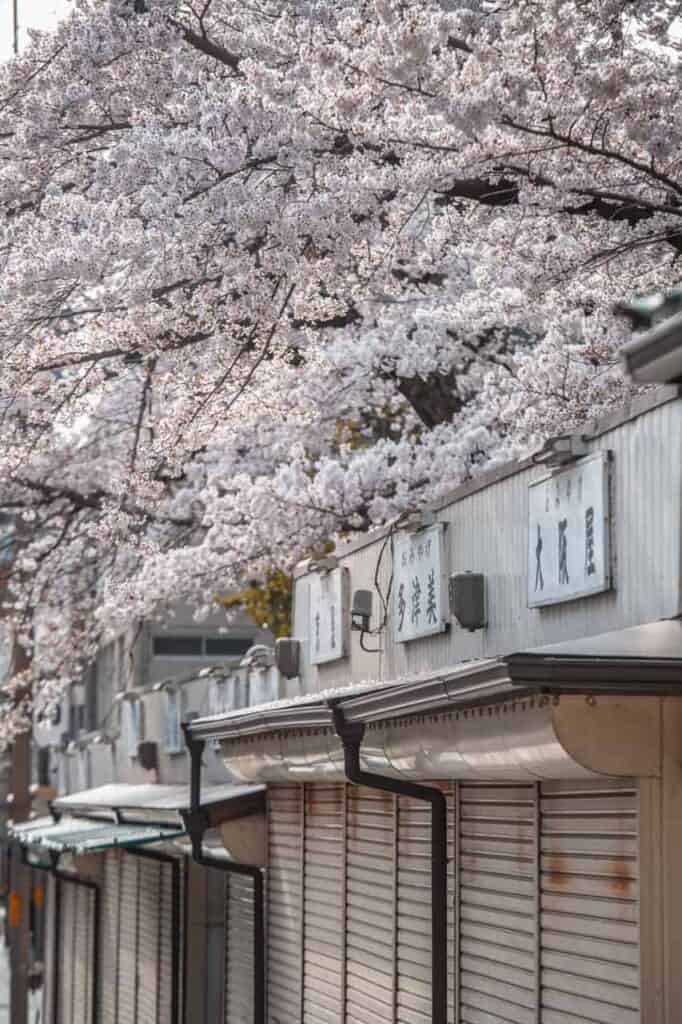
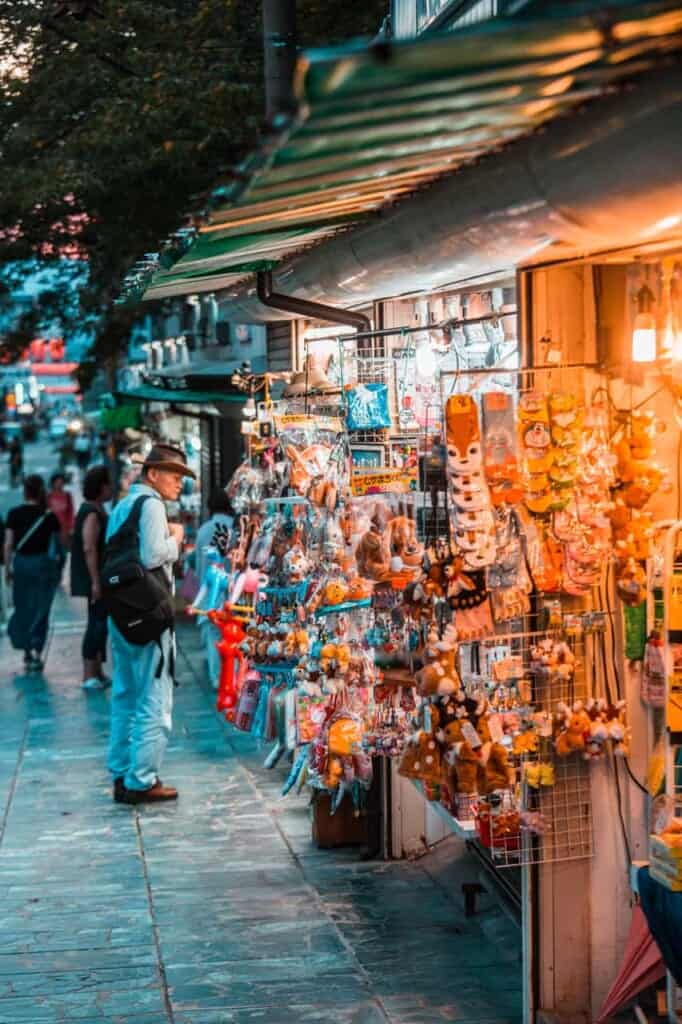
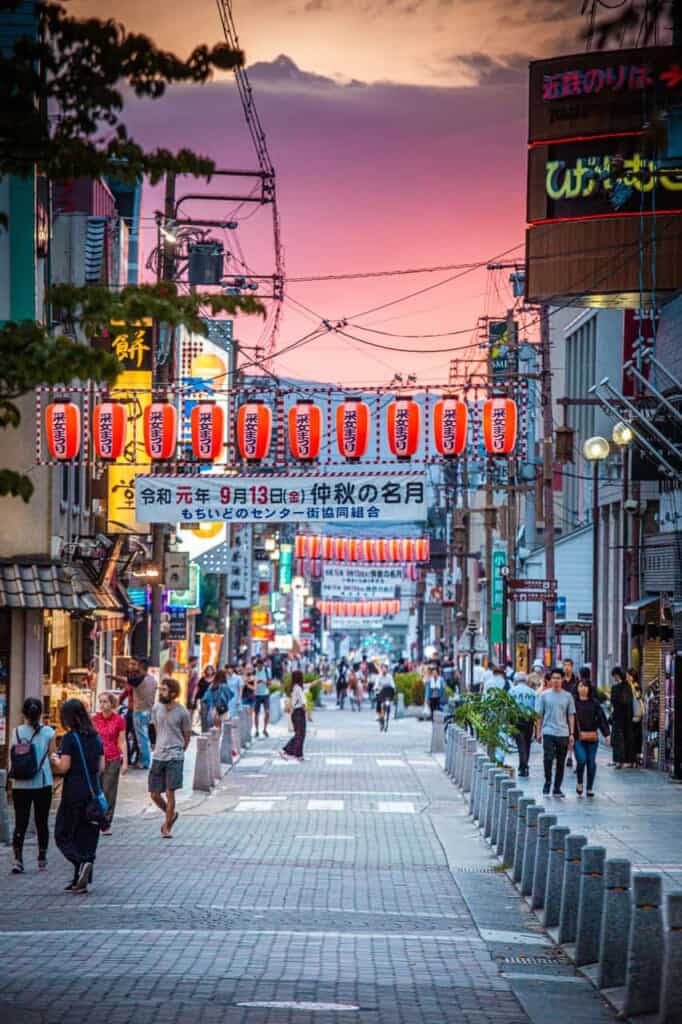
 Sanjo dori Street
Sanjo dori Street
ROUTE- Sanjo dori St, Nara, Japan
- ☆☆☆☆☆
Visit the Cherry Blossoms on Mount Wakakusa in Nara
Mount Wakakusa 若草山, 342 meters high, rises on the skyline of Nara. Its summit is easily accessible even for the less intrepid via two paths with several routes. This grassy mountain is divided into two areas. The first one can be reached after a climb of about 15-20 minutes. It is the ideal place to enjoy the views of the city and regain strength to continue the way to the top, which you can reach after another 20-30 minutes of hiking.
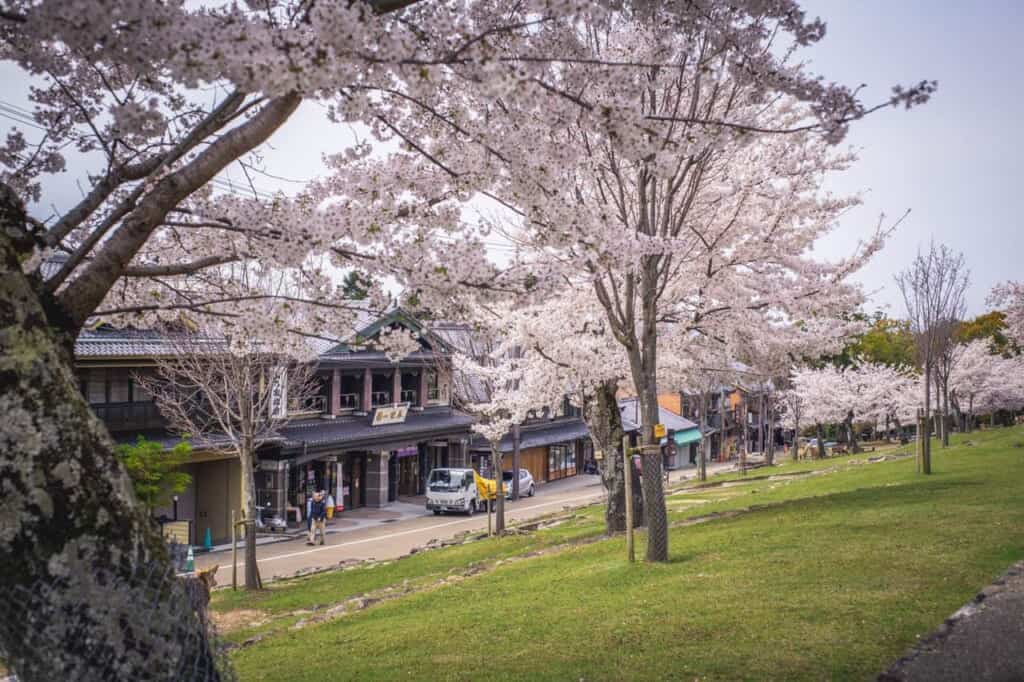
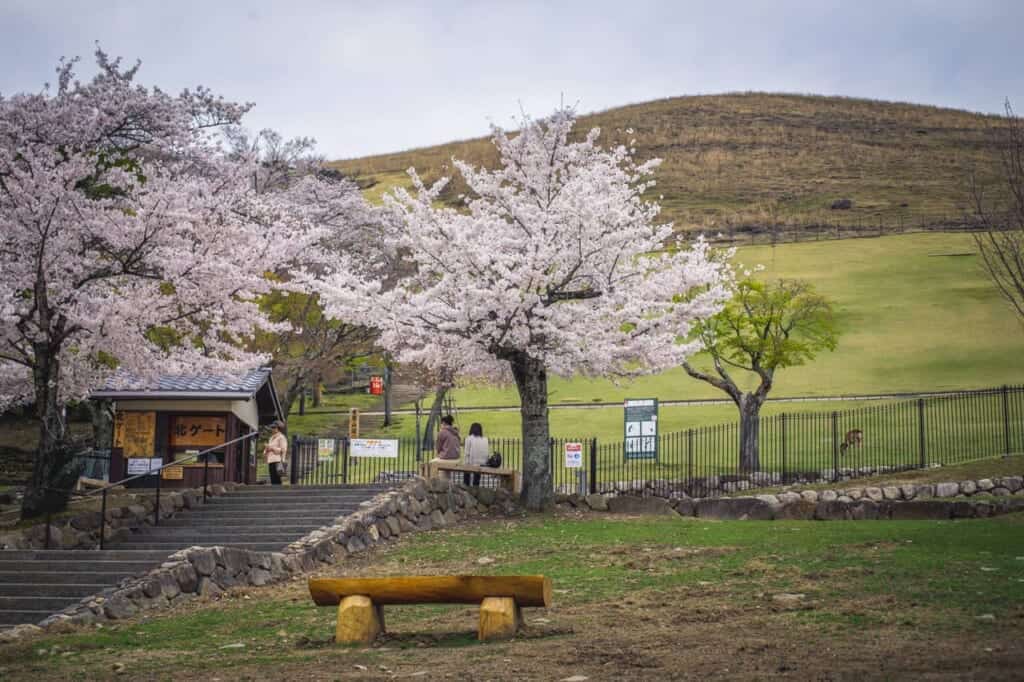
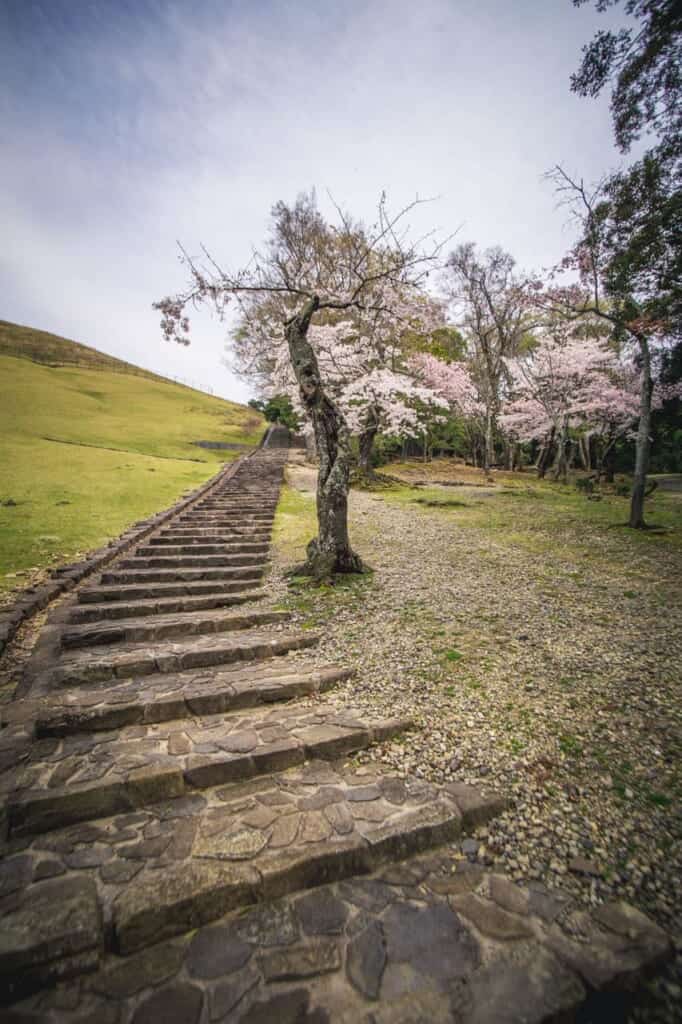
To access Mount Wakakusa, also known as Mount Mikasa, there is a small fee of 150 yen and it can only be climbed between March and December. When I arrived at the ticket office I was told there were two ways up, north and south. The popular sakura is lined up along the north path, so I decided to climb the south to enjoy the cherry blossoms on my way down the mountain.
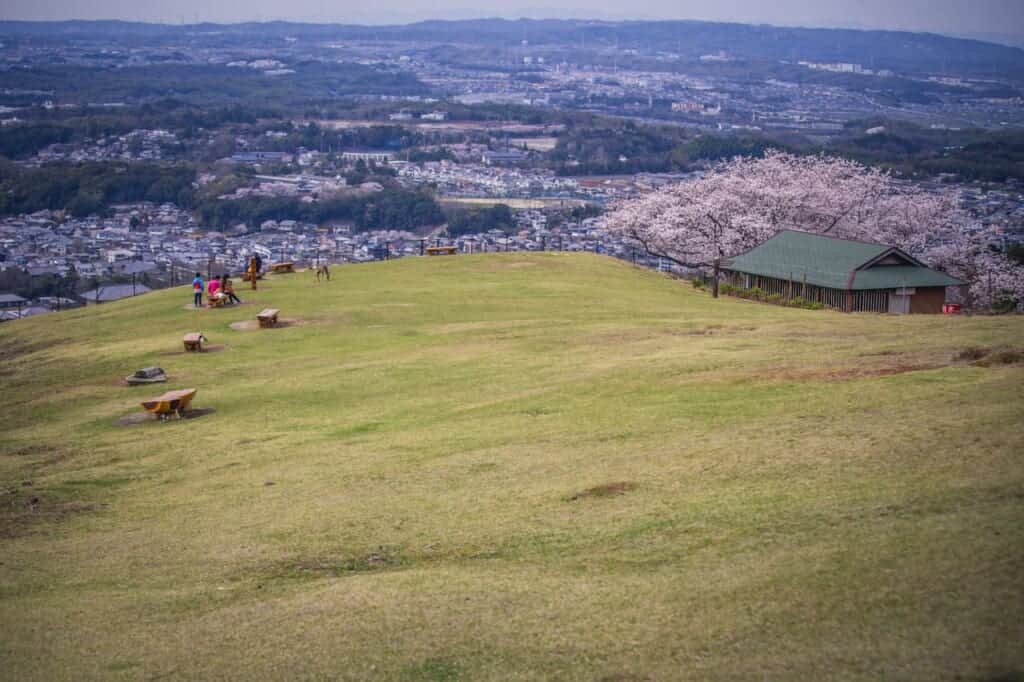
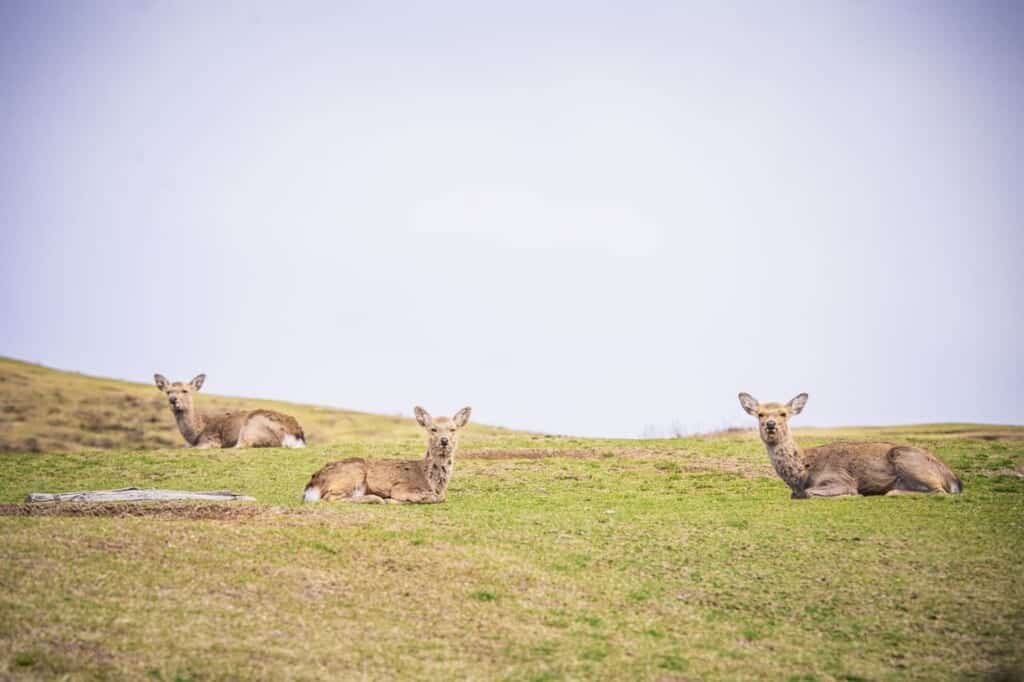
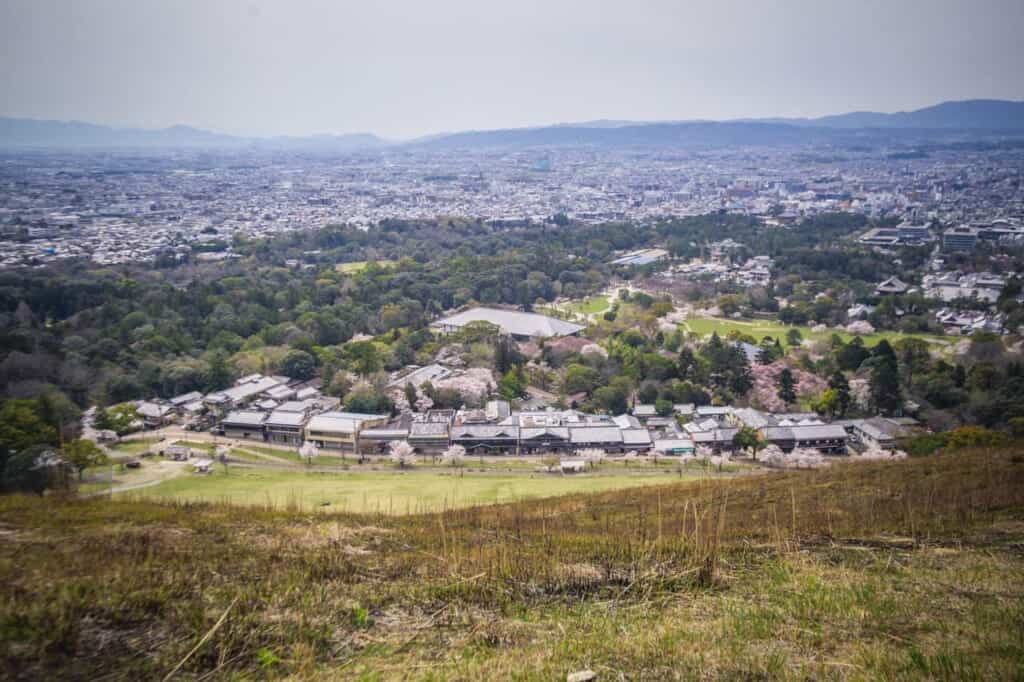
Although I am not an expert hiker, my climb to the top was short and easy. The steps were in good condition and not too steep. After a few minutes of climbing, I reached the first half of the hill, where the peaceful deer were waiting for me on a large green grassy esplanade. There I sat down on one of the benches to relax and enjoy the wonderful views of Nara city.
A Descent Among Cherry Blossoms
My purpose during this visit to Wakakusa was to contemplate the cherry blossoms, and the woman at the ticket office had warned me that they only reached halfway up the mountain. So I decided to leave the climb to the peak for another time and I set out to descent by the north path, the path of sakura.
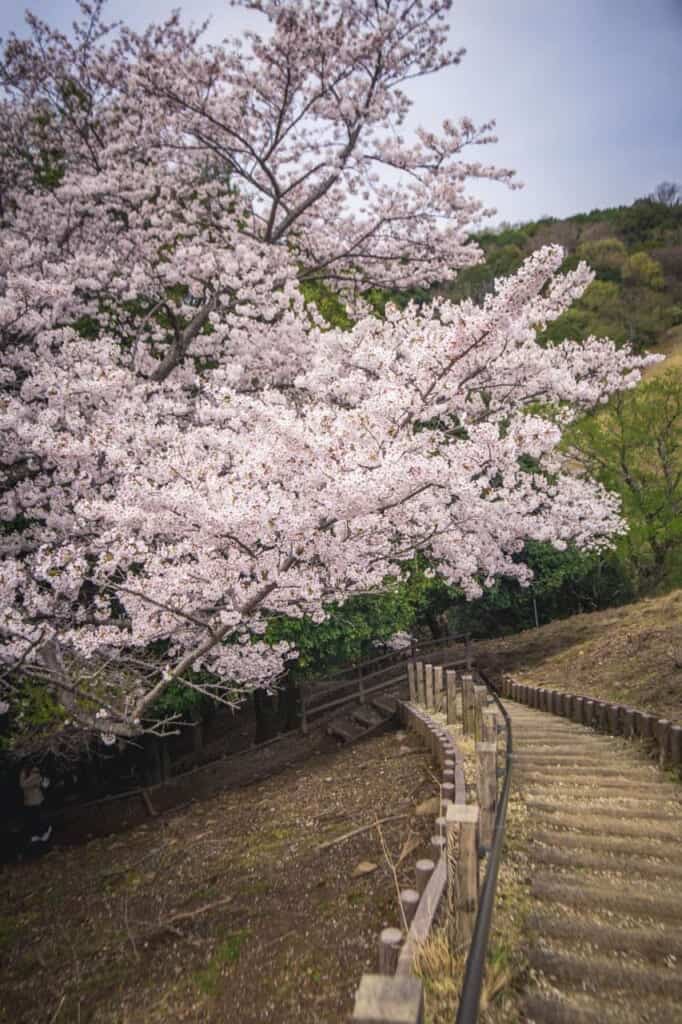
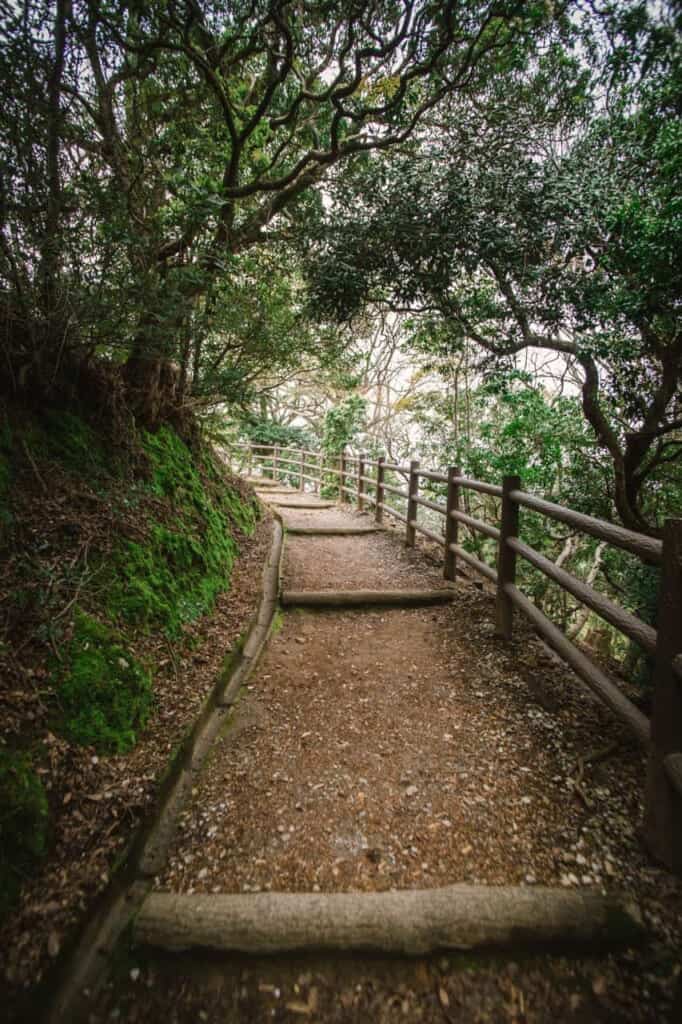
Very close to small construction, I found the first cherry trees that gave way to the beginning of my descent. This route is somewhat more complicated than the one I had taken to ascend. In some parts, the path is covered by some stones and tree roots. After a short stretch of intense green nature, the expected sakura appeared. Their petals covered the rest of the trail and accompanied me until I reached the foot of the mountain.
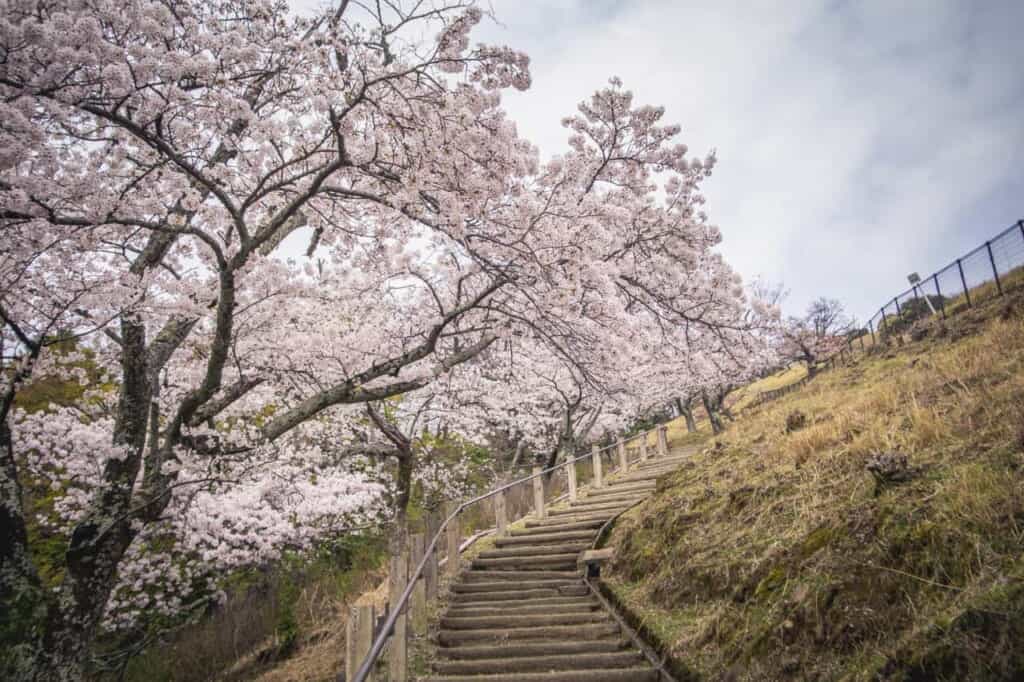
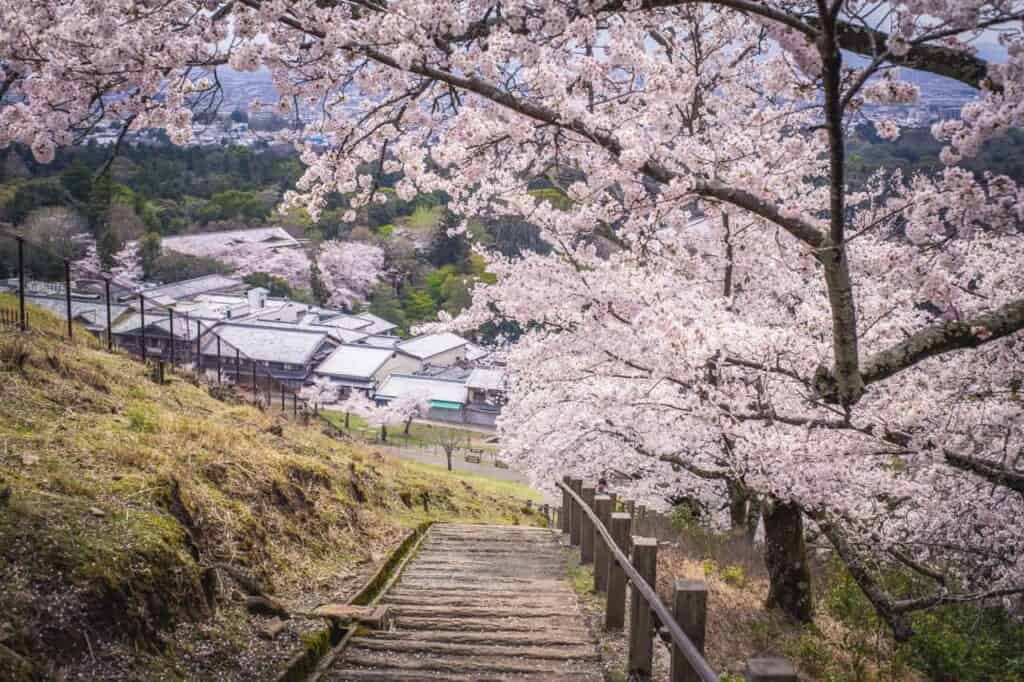
For an inexperienced mountaineer like me, it was a very rewarding experience. Perhaps, if it were not for the cherry blossoms, I would never have dared to climb the mountain because of laziness or fear of not being able to achieve it. This experience taught me that when there is a goal, it doesn’t matter how high the mountain is or how difficult the path is. The important thing is perseverance and not giving up. And in this case, the sakura was a worthwhile goal.
 Mount Wakakusa
Mount Wakakusa
ESTABLISHMENT NATURAL_FEATURE- Mount Wakakusa, Zoshicho, Nara, 630-8211, Japan
- ★★★★☆
How to Get to the Sakura Cherry Blossoms in Nara Park
Nara Park is a 5-minute walk from Kintetsu Nara Station 近鉄奈良駅 (Nara line) and 20 minutes from JR Nara Station JR奈良駅 (Yamatoji Line, Sakurai Line and Nara Line).
Alternatively, the Nara City Loop bus, easily recognizable by its vibrant yellow color, runs from both stations to Nara Park. It also makes several stops at different locations within the park. The Nara Kotsu map shows the places mentioned in the article where you can see the cherry blossoms in Nara Park and Mount Wakakusa and shows its route marked in yellow.
 Kintetsu-Nara Station
Kintetsu-Nara Station
ESTABLISHMENT POINT_OF_INTEREST TRAIN_STATION- Japan, 〒630-8215 Nara, Nishimikadochō, 東向中町29
- ★★★★☆
 Nara Station
Nara Station
ESTABLISHMENT POINT_OF_INTEREST TRAIN_STATION- 1 Sanjohonmachi, Nara, 630-8122, Japan
- ★★★★☆
Nara Park is full of interesting places. It is home to some of the country’s finest temples and shrines, one of Japan’s most important Buddhist art museums, a giant Buddha, and over a thousand friendly deer. Enjoying this incomparable scenery of nature and culture along with the beauty of the cherry blossoms makes Nara a must-see during the early spring.
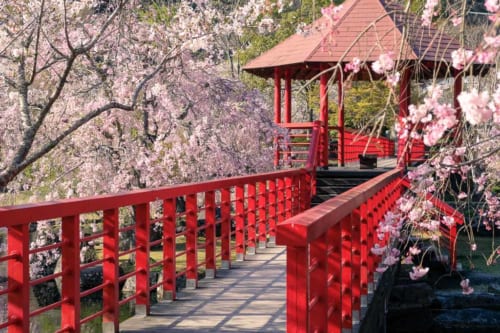
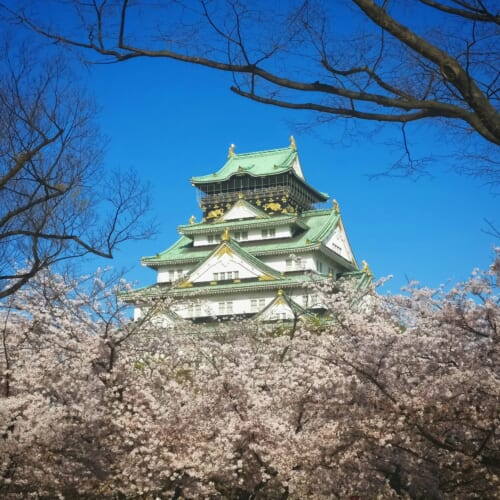
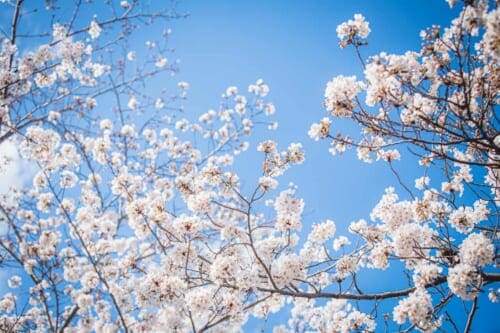
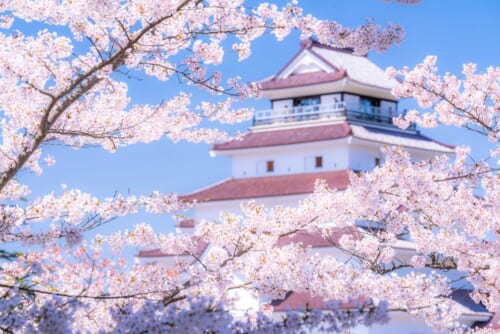
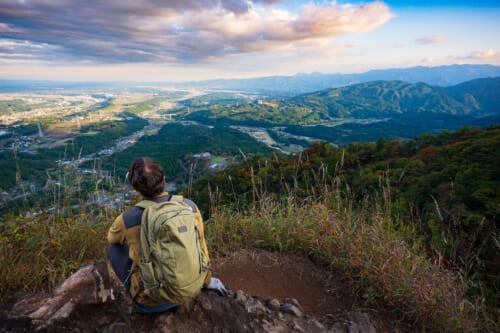
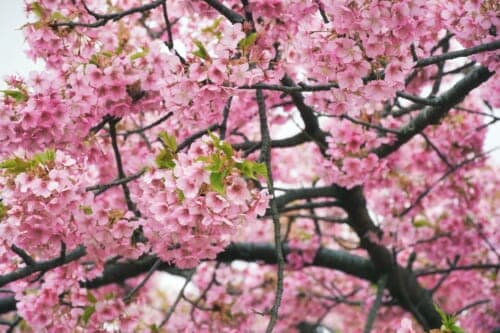
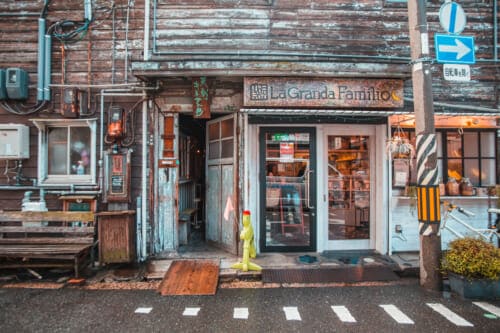

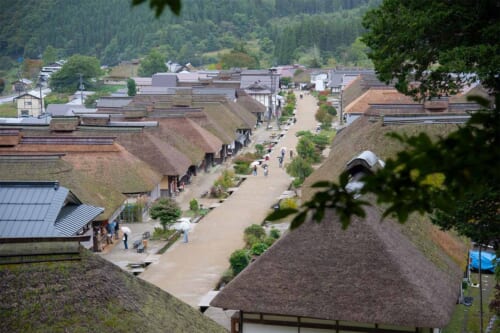
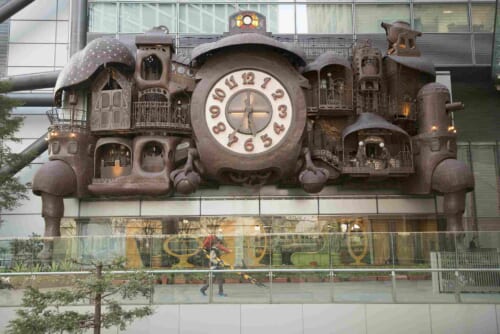
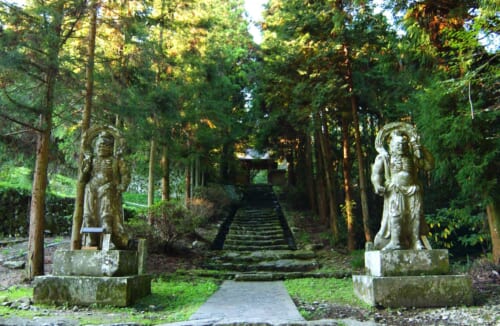


No Comments yet!